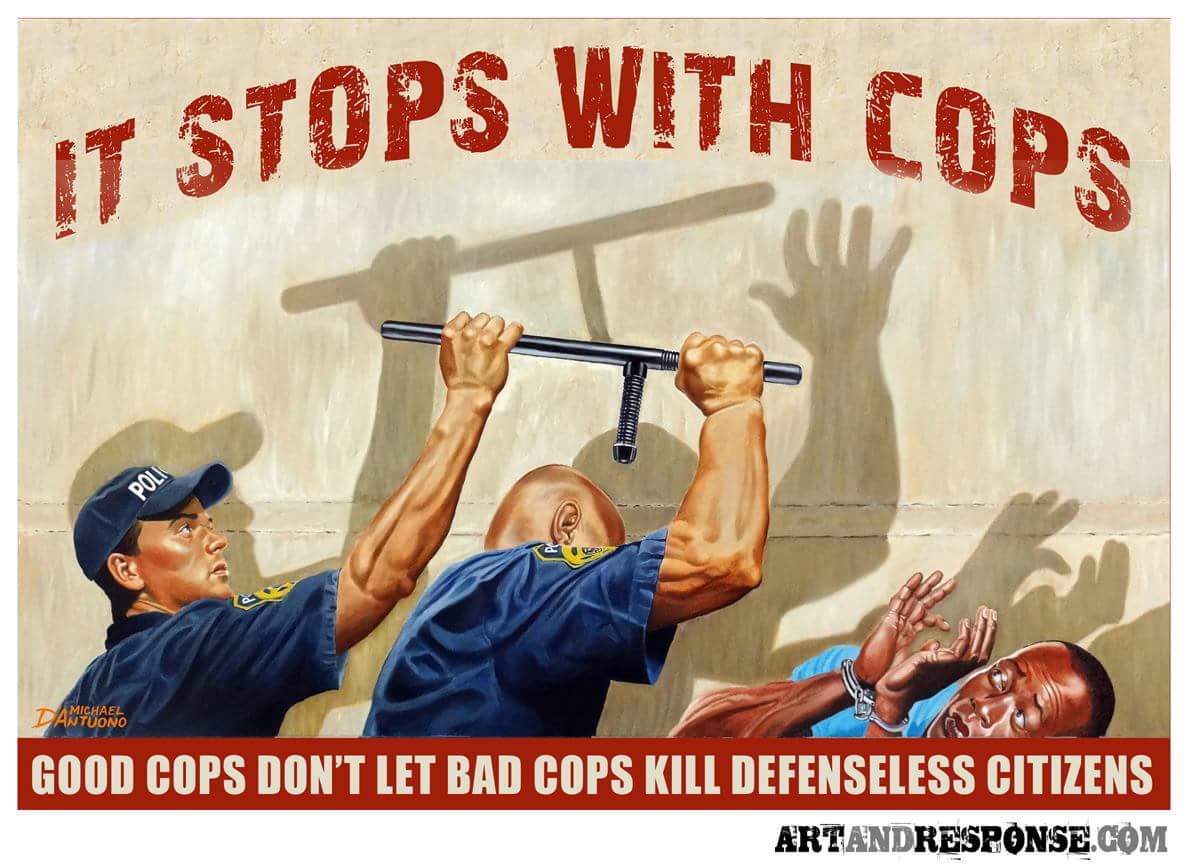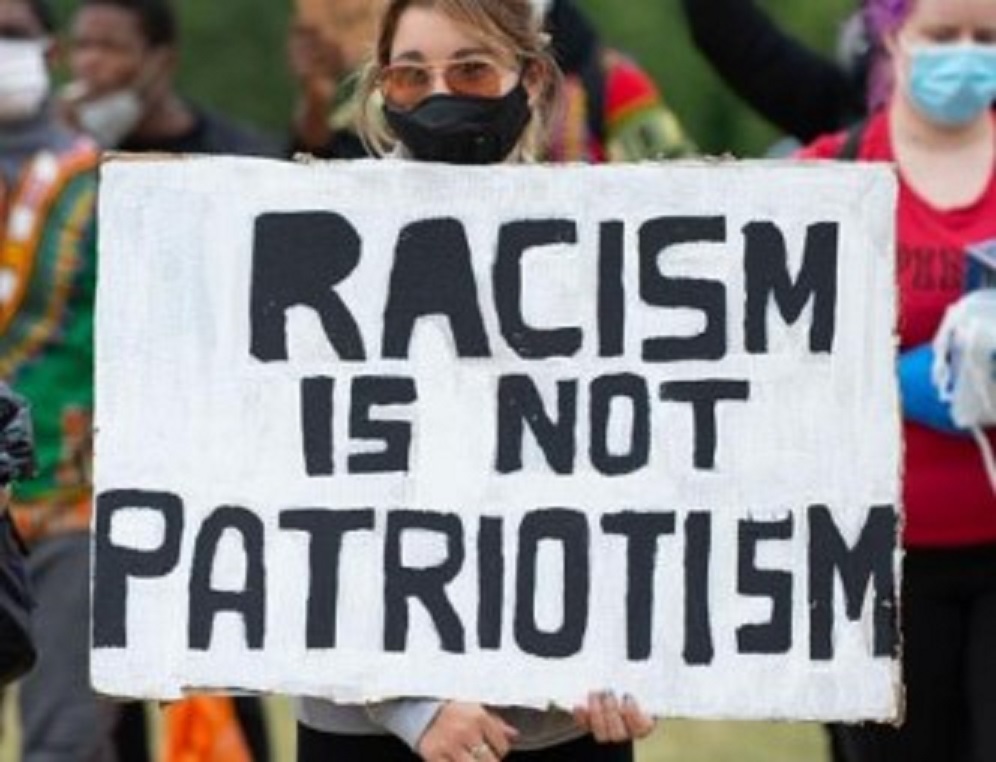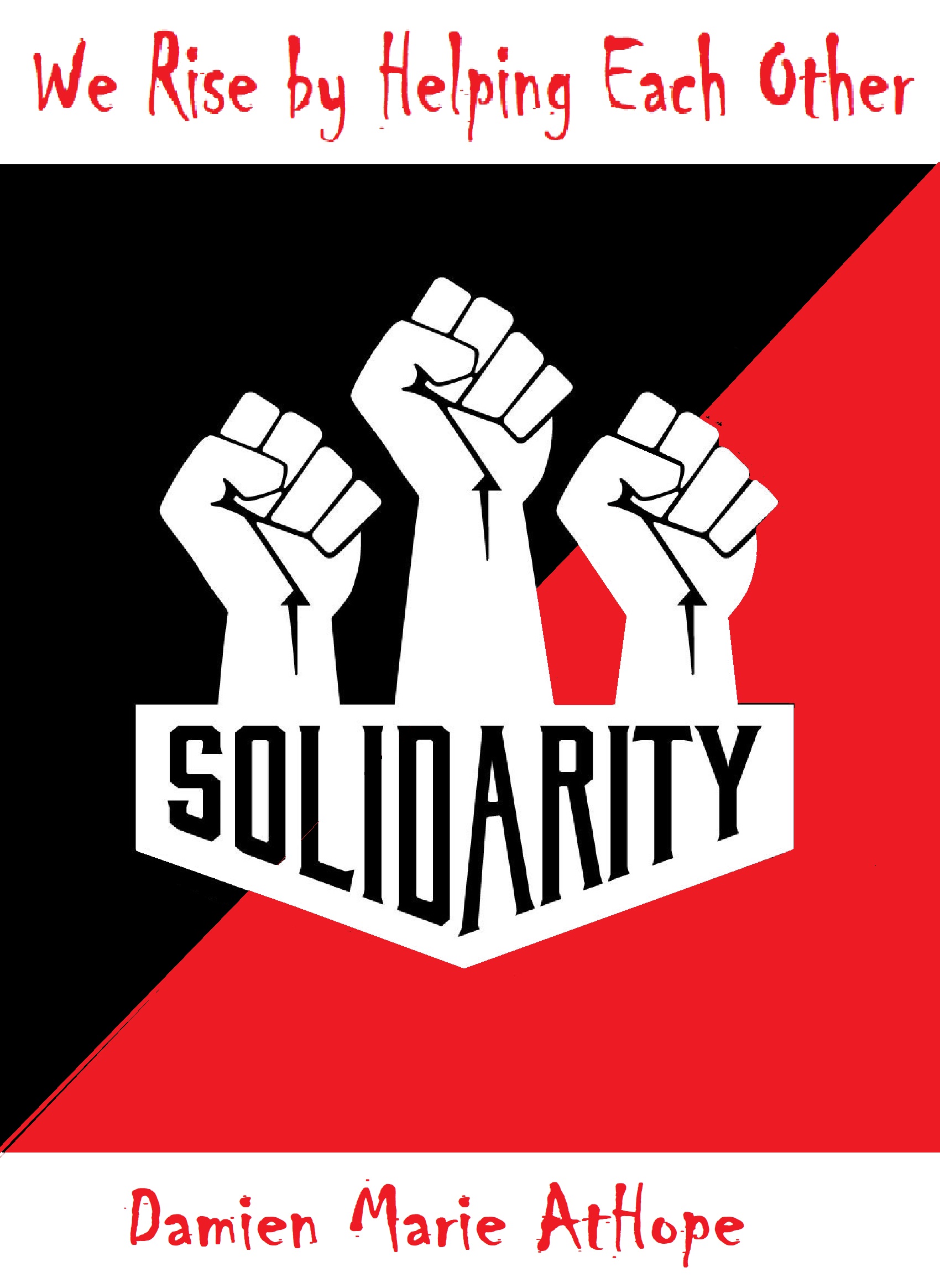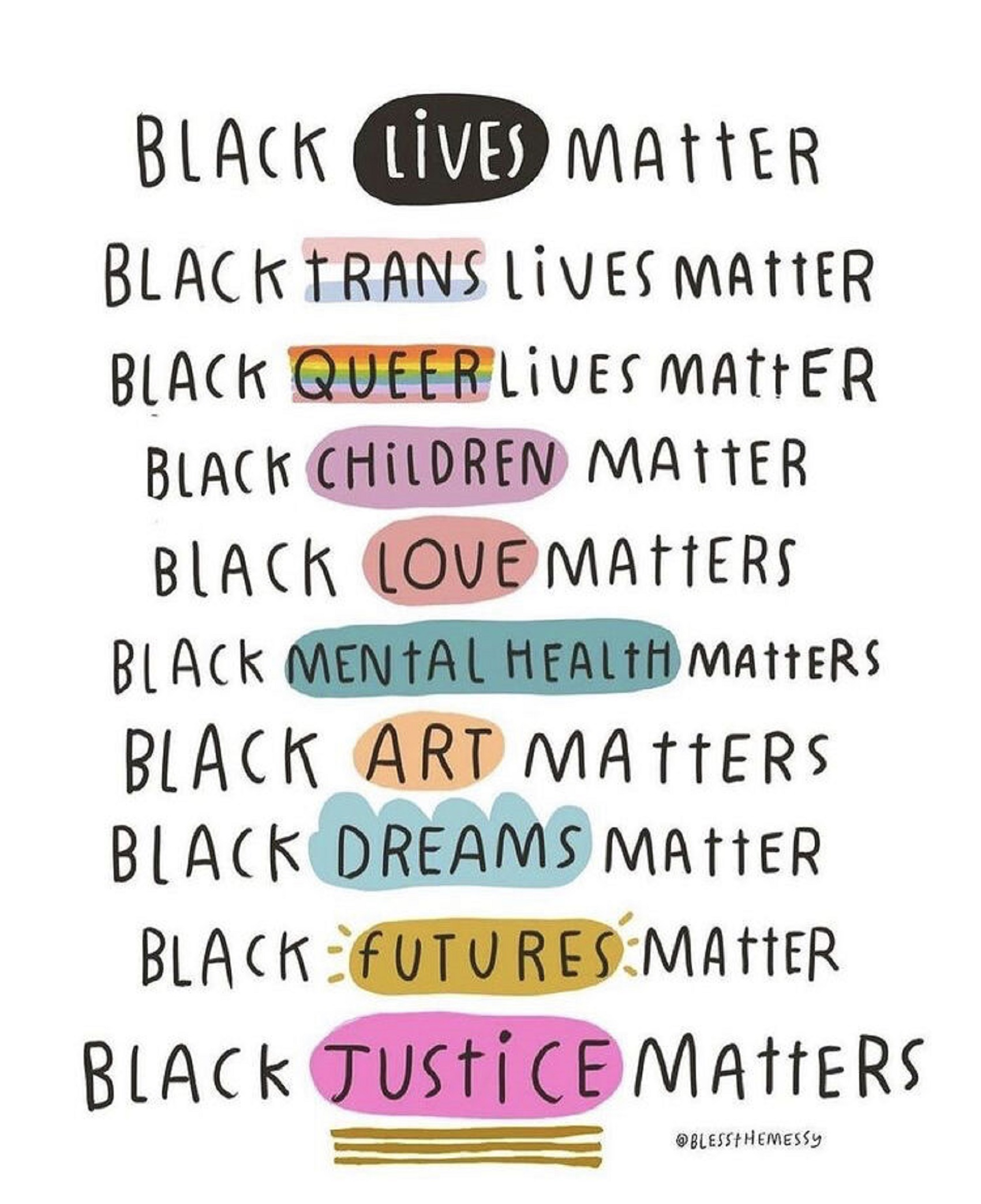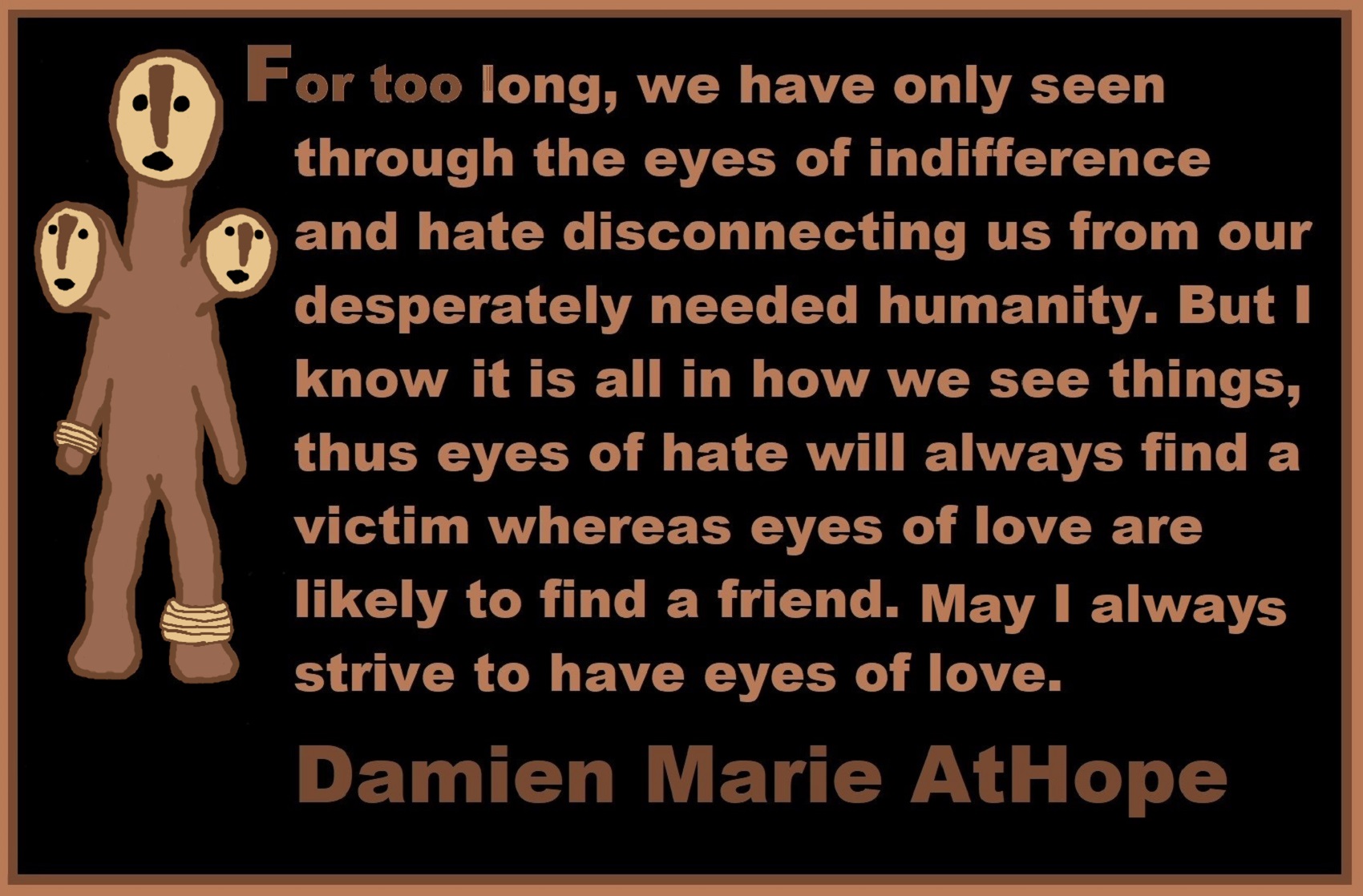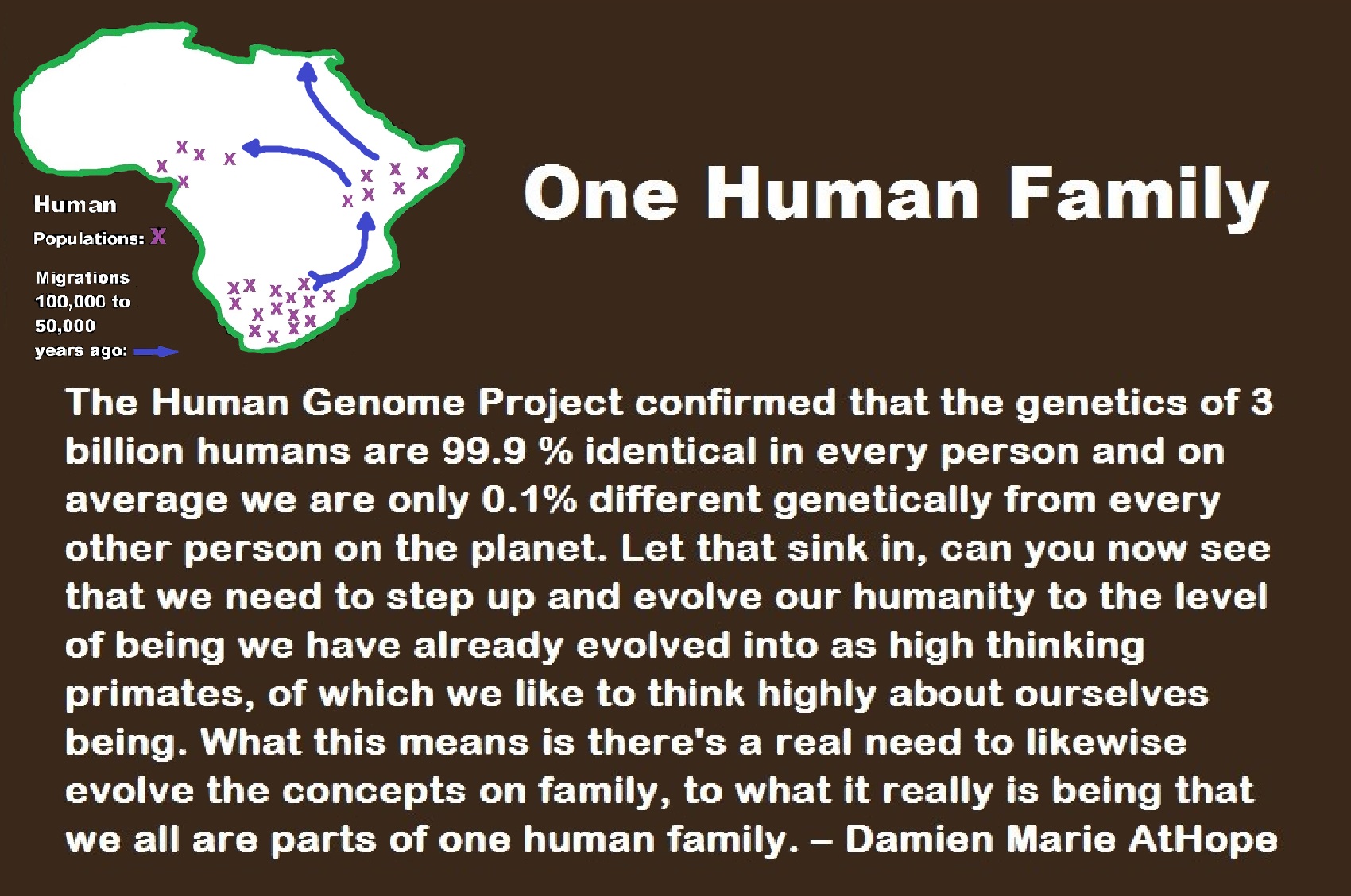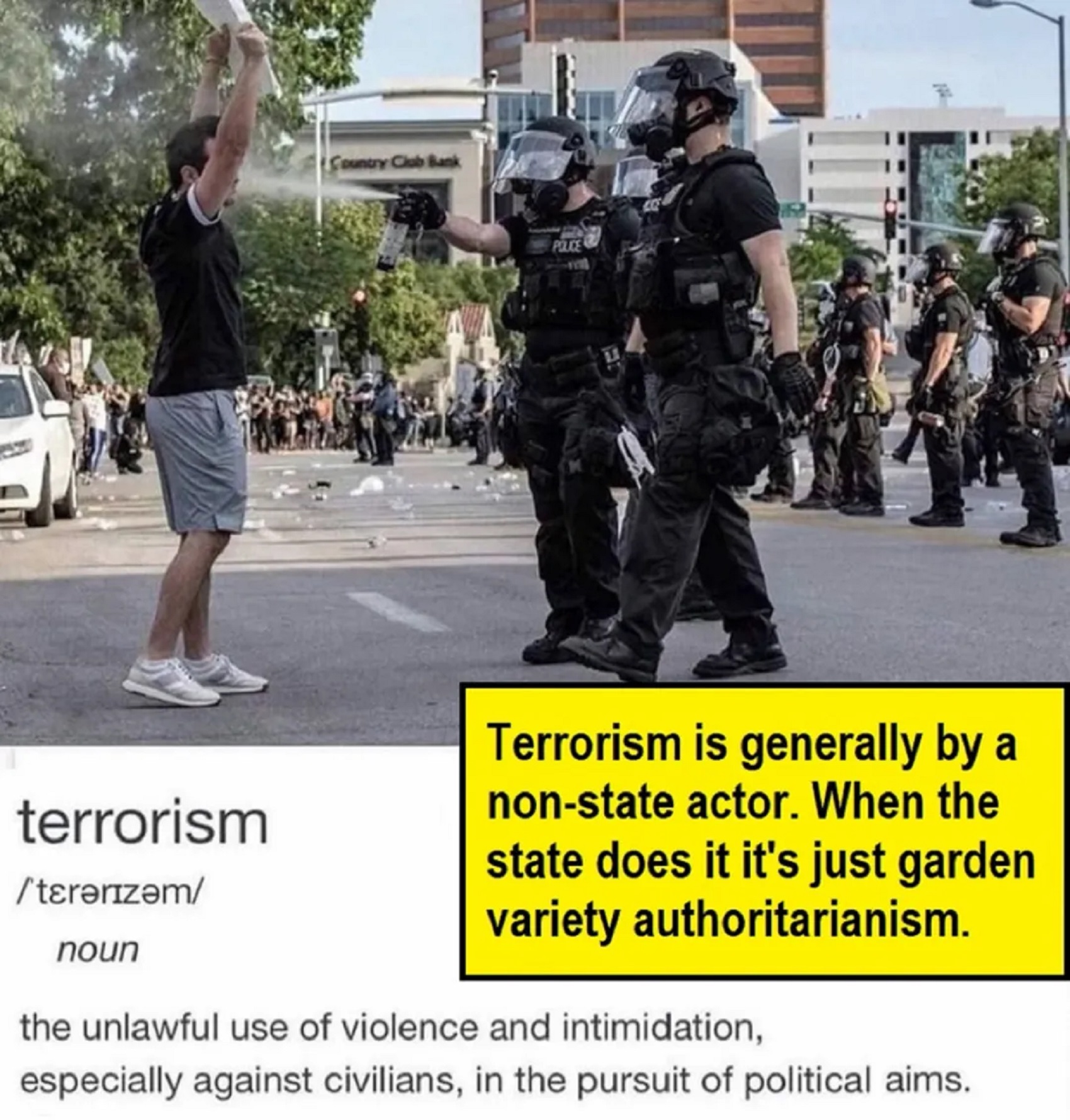
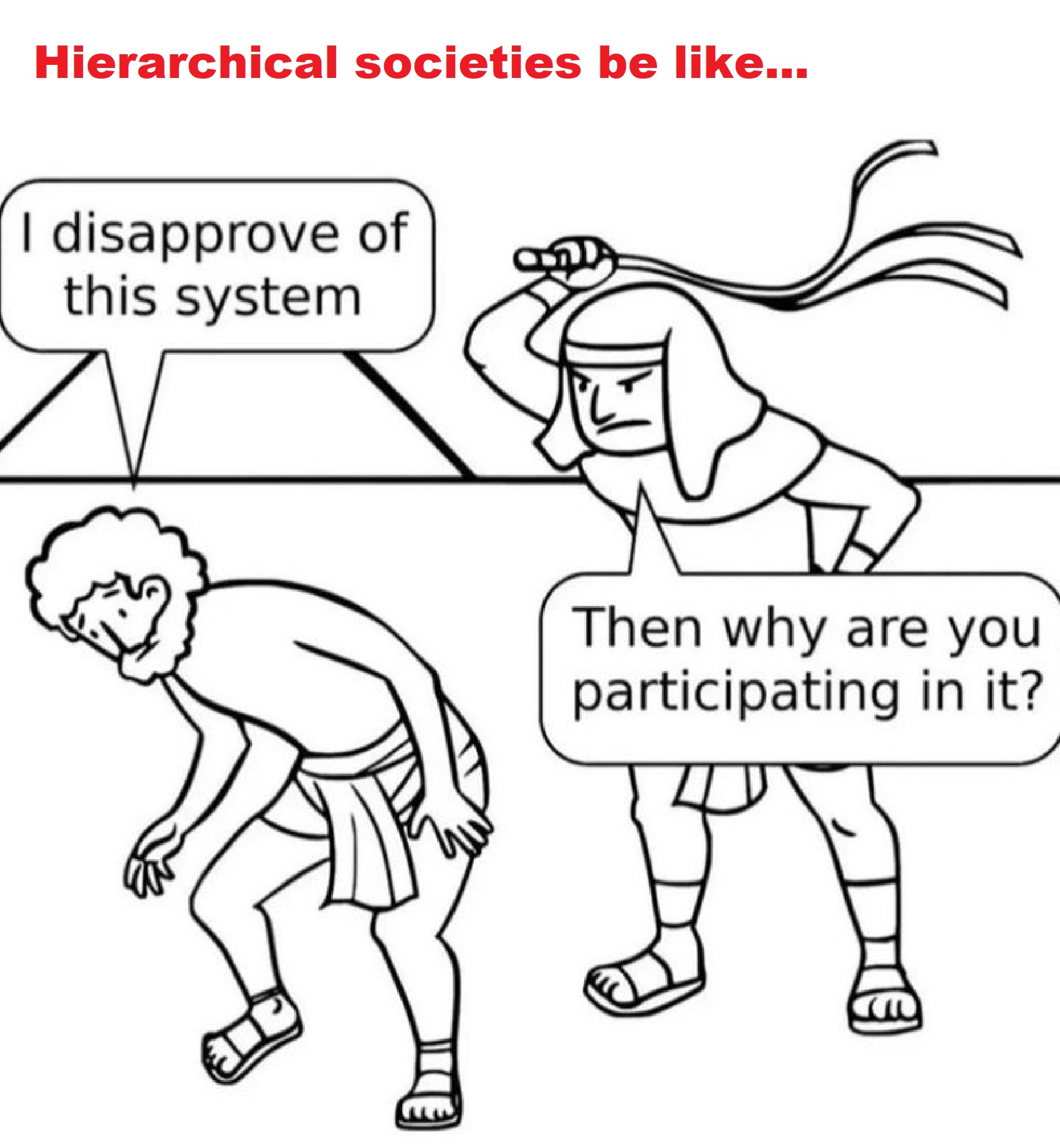
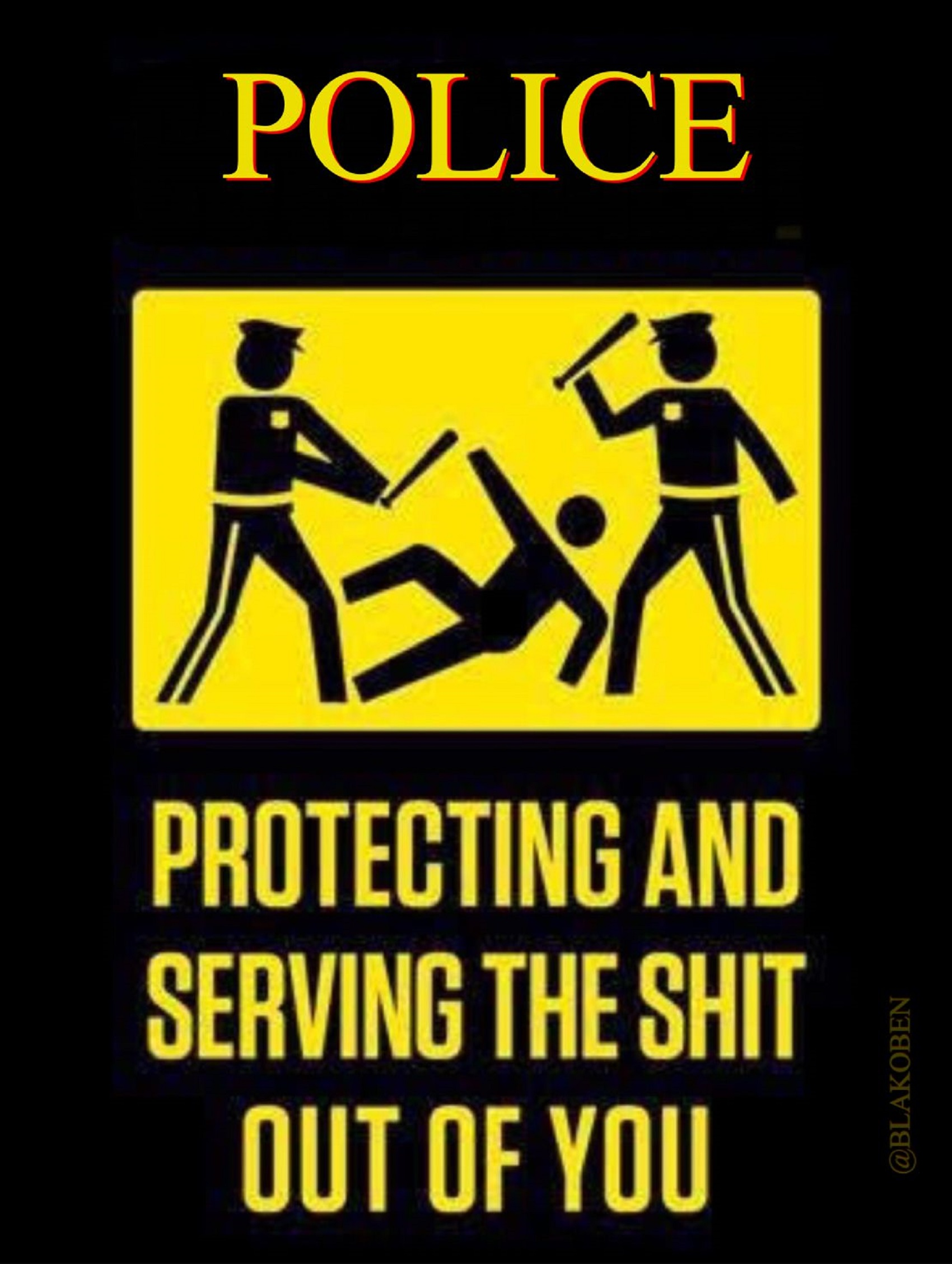
The Myth of Police Protection: Serve and Protect, Not My Job!
SUPREME COURT RULING: Police Have No Duty To Protect The General Public
Are Police Officers here to “SERVE & PROTECT” or “SEARCH & DESTROY?
The issue here is Human Rights and we lost that when the Supreme Court decision in 2013 stated that police at all levels of the government have no duty to protect the citizens. This is an issue between the police and the citizens. When did the police decide that it was better to shoot to kill instead of talking to them or using other nonviolent or at least non-lethal methods? Also when did the police and SWAT team merged and become military? If the police are shooting and killing us, who is going to protect us? Why are we citizens allowing the police to be turned into a branch similar to domestic terrorism?
I believe this is anti –American because the Constitution says ‘’We the People of the United States, in order to form a more perfect Union, establish Justice, insure domestic Tranquility, provide for the common defense, promote general Welfare, and secure the Blessings of Liberty to ourselves and our Posterity, do ordain and establish this Constitution for the United States of America. This issue promotes an environment where police are at odds or in a position of occupy in America instead of protecting it. This decision by the Supreme Court has to be addressed or all of these situations where citizens’ well-being is not being protected or is being violated will continue or increase, especially if prosecutions mimic the non-responsibility of police touted by the Supreme Court decision.
A way that WE THE PEOPLE can actively address this is by creating a petition or movement put forth to have this ruling overturn or a new amendment made that states clearly that the police are to serve and protect us, insure domestic tranquility, promote general welfare, and establish justice. So Police are needed to serve and protect us and not just enforce laws. If this conceptual change occurred or was supported, the police would be an asset to the community and not just an enforcer over the community. If this does not change the systemic issues that fall under it will continue to happen thus the continuing disregard of well-being or lack of consideration of well-being of the public will not stop and this creates an environment that allows Racism and other bigotry to flourish, diminishes the desire to not use force and it forgives or approves the excessive use of force.
AMERICANS KILLED BY COPS: 996 this year so far, 1108 in (2014), & 2880 in (2013).
EVERY 8 HOURS COPS KILL AN AMERICAN CITIZEN!
Cops are indicted in less than 1% of killings, but the indictment rate for Citizens is 90%.
In the police, own words:
43% – “Always following the rules is not compatible with getting the job done.”
52% – “It is not unusual for a police officer to turn a blind eye to improper conduct of other officers.”
61% – “Do not always report serious abuse by fellow officers.”
84% – “Witnessed fellow officers using more force than necessary.”
Only a small fraction of the 17,000 law enforcement agencies track misconduct reports. The Department of Justice generated a report on police misconduct in the United States in 2001, and the report was based on statistics that were voluntarily given by 5% of the police departments in the United States. Ref. 1
Cops will continue to be criticized as long as they shun the good ones and stand behind the bad ones. If we by what some police try to say that most police are good and only a few are bad apples, then it’s past time for the ‘few bad apples’ to be corrected by their police compatriots. We need the police to serve and protect or they are little better than oppressors. I don’t know but it often seems there is a majority of corrupt police on one level or another, and the ones that truly aren’t, and uphold their oaths seem like a minority.
Is is really just a ‘few bad apples’ or a few isolated incidents of police misconduct or harm?
40 Cops in 30 Days Racked Up Dozens of Charges of Child Rape and Sexual Abuse
Innocent 77-yo Blind Man Called 911 for Help, Cop Shows Up, Beat & Arrested Him for No Reason
Family Has to Sue After Killer Cop Murders Their Unarmed Son
Intolerant Cop Couldn’t Stand to See Lesbians Kissing So He Beat & Arrested Them For It
Incompetent Cops Arrest Innocent Deaf Woman, Kidnap, Sedate, and Humiliate Her
But when a few are good apples do speak up, and then they often get persecuted by their “so called “good apples”fellow officers and many face getting fired. Then they begin the long uphill battle to get their job back. Some win. Some lose. Such as Good Cop Fired for Stopping Fellow Cop from Beating a Mentally Ill Man,
Cop Stops Fellow Cop From Choking a Handcuffed Man, She Was Then Beaten and Fired
Police officer’s should be Peace Officers, so what else could be going on?
The ones who wish authority as masters never feel it must be justified, where us who wish to not be slaves are demanded by them to explain why.
Race Gap yet another issue in the American Legal System.
White Americans make up 95% of elected prosecutors across the US, white men exclusively represent 79% of elected prosecutors. Which is amazing enough but this is even more amazing when you realize that white men only make up 39% of the population but account for 73% of all police officers. Furthermore, a study cites the non-indictments of white police officers in the high-profile deaths of unarmed black men as the “shocking” reality of a disproportionate and non-diverse criminal justice system that relies on prosecutorial power. In 2013, racial or ethnic minorities comprised 27 percent of local police officers, a little up from 25 percent in 2007, that’s definitely up from 15 percent in 1987, the first year the periodic study was conducted. That all may sound bad but its even worse only 12% of police officers were black in 2013, up from 9% in 1987. Ref. 1, 2
Breakdown on stats America’s police departments Race Gap from 17 metropolitan areas
My political page on Facebook Axiological-Leftist: https://www.facebook.com/AxiologicalLeftist/
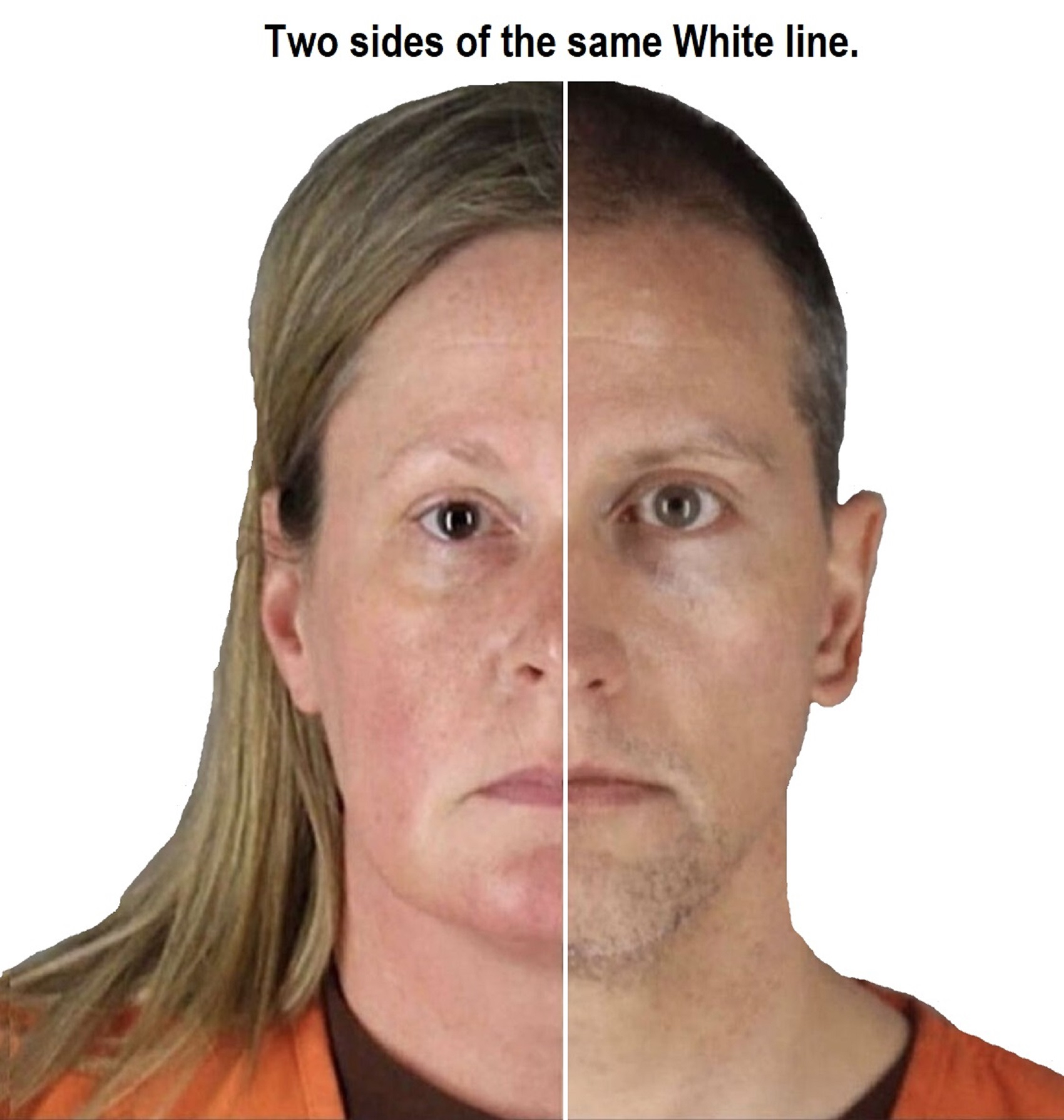

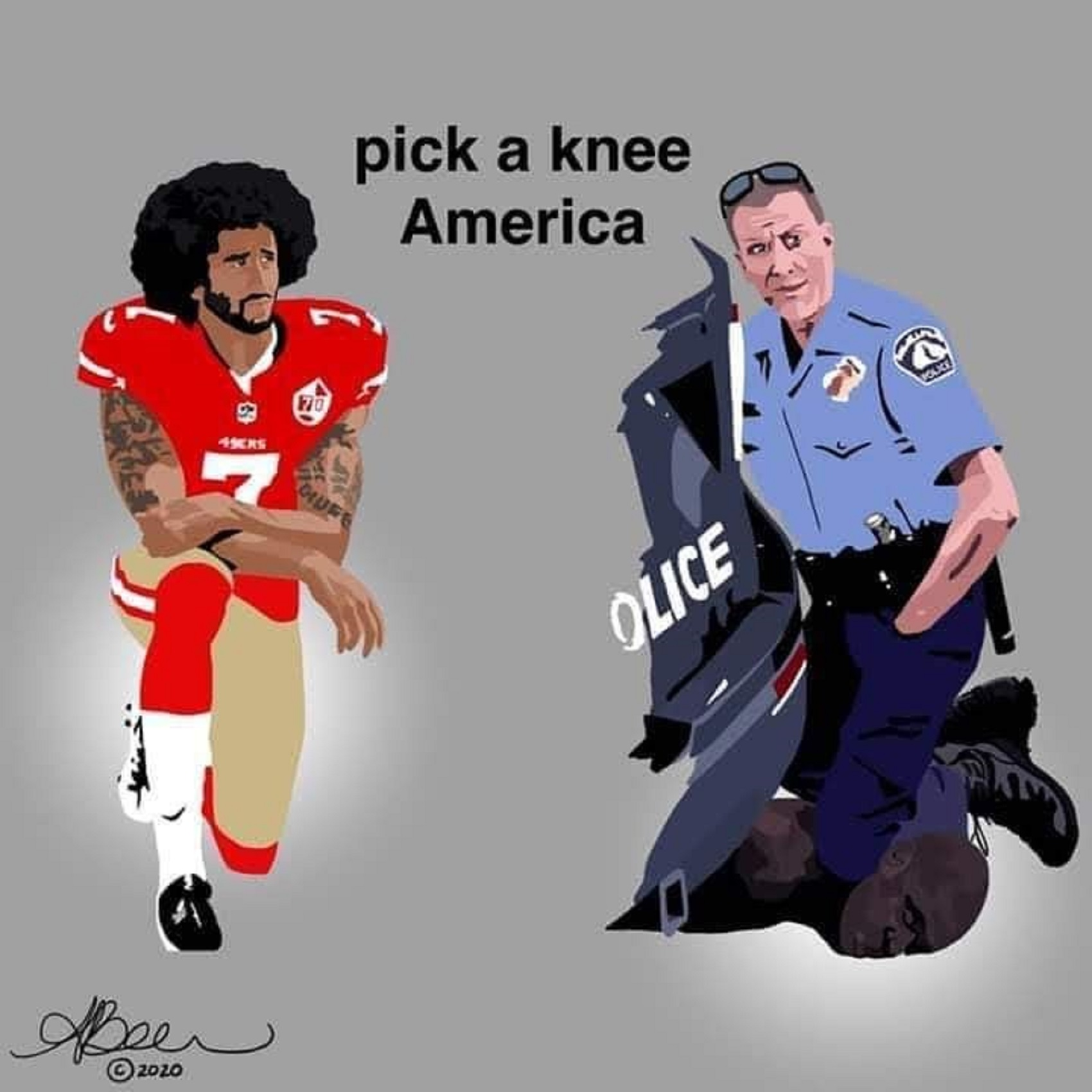
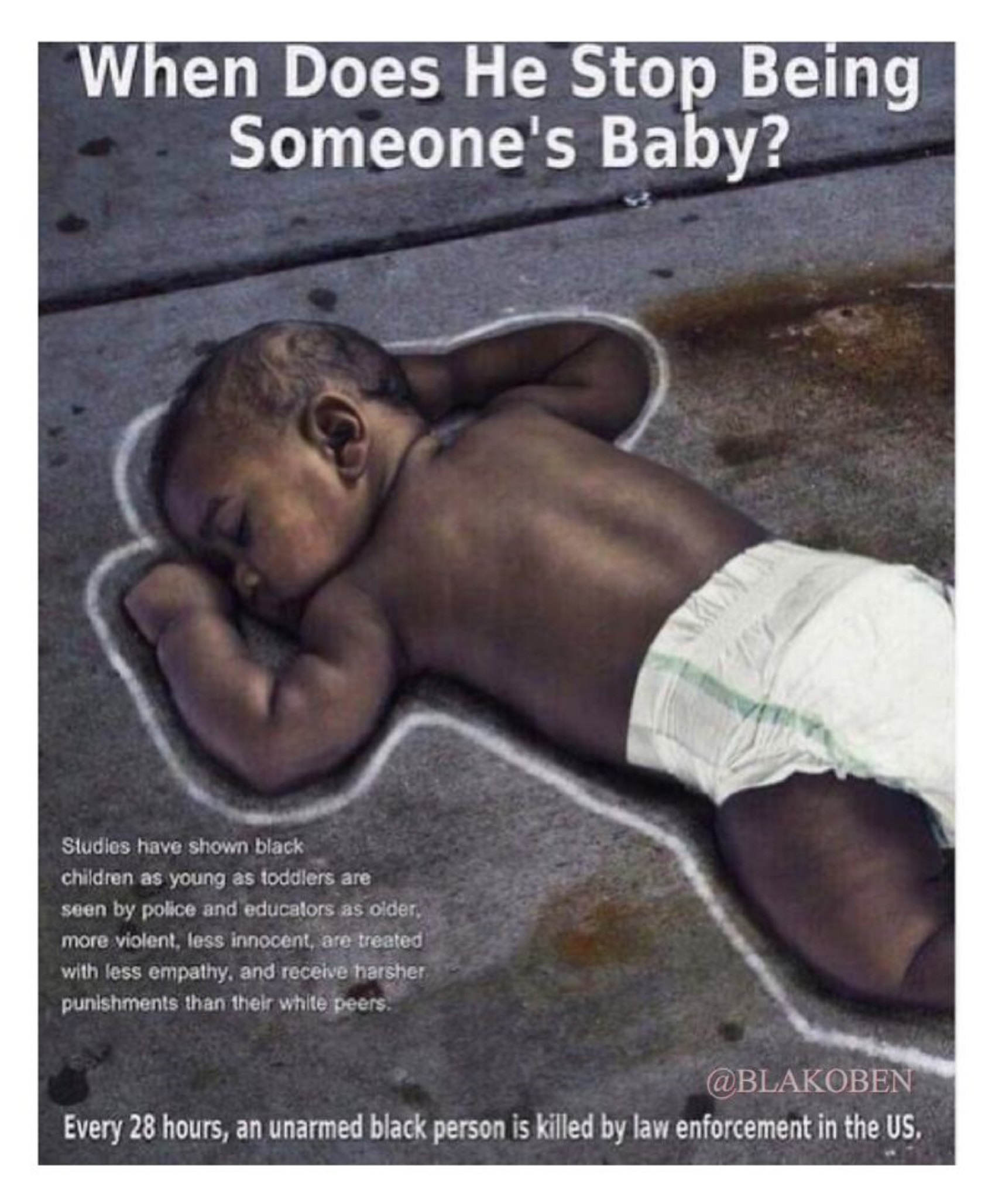

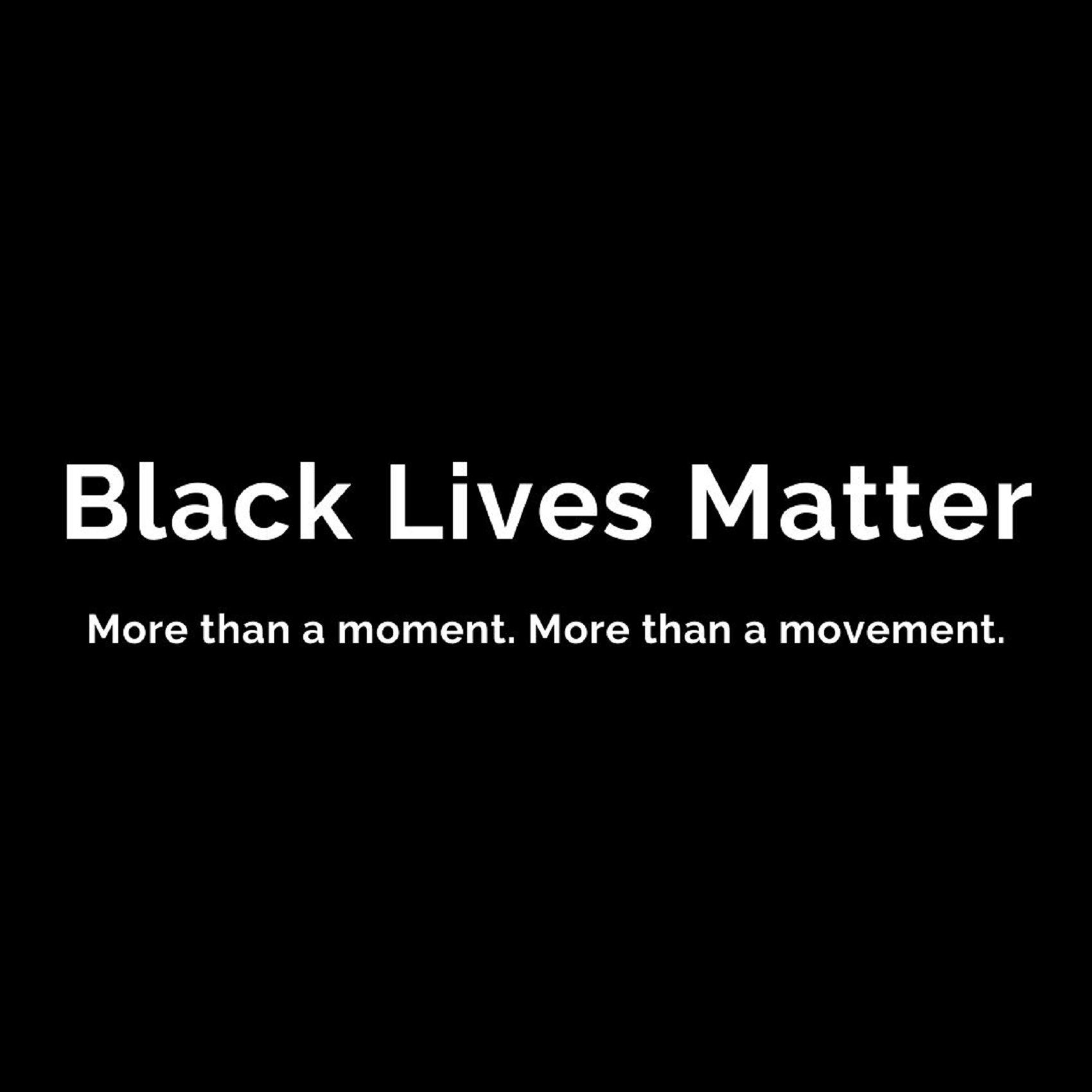
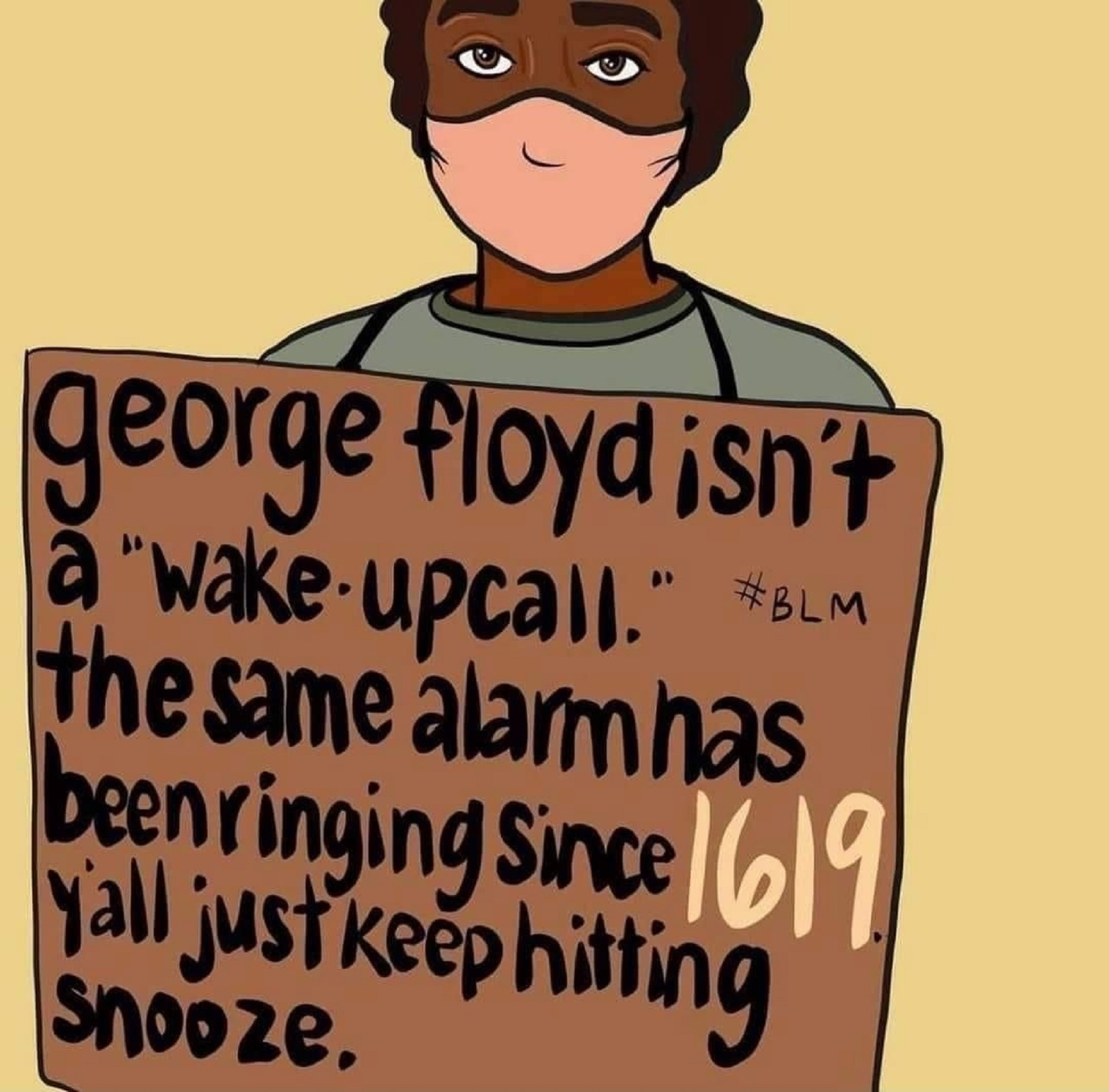
Black Lives Matter
“Black Lives Matter (BLM) is a decentralized political and social movement that seeks to highlight racism, discrimination, and inequality experienced by black people. When its supporters come together, they do so primarily to protest incidents of police brutality and racially motivated violence against black people. The movement and its related organizations typically advocate for various policy changes considered to be related to black liberation. While there are specific organizations that label themselves simply as “Black Lives Matter,” such as the Black Lives Matter Global Network, the overall movement is a decentralized network of people and organizations with no formal hierarchy. The slogan “Black Lives Matter” itself remains untrademarked by any group. Despite being characterized by some as a violent movement, the overwhelming majority of its public demonstrations have been peaceful.” ref
“The movement began in July 2013, with the use of the hashtag #BlackLivesMatter on social media after the acquittal of George Zimmerman in the shooting death of African-American teen Trayvon Martin 17 months earlier in February 2012. The movement became nationally recognized for street demonstrations following the 2014 deaths of two African Americans, that of Michael Brown—resulting in protests and unrest in Ferguson, Missouri, a city near St. Louis—and Eric Garner in New York City. Since the Ferguson protests, participants in the movement have demonstrated against the deaths of numerous other African Americans by police actions or while in police custody. In the summer of 2015, Black Lives Matter activists became involved in the 2016 United States presidential election.[13] The originators of the hashtag and call to action, Alicia Garza, Patrisse Cullors, and Opal Tometi, expanded their project into a national network of over 30 local chapters between 2014 and 2016.” ref
“The movement returned to national headlines and gained further international attention during the global George Floyd protests in 2020 following his murder by Minneapolis police officer Derek Chauvin. An estimated 15 million to 26 million people participated in the 2020 Black Lives Matter protests in the United States, making it one of the largest movements in the country’s history. The movement comprises many views and a broad array of demands but they center on criminal justice reform.” ref
The popularity of Black Lives Matter has rapidly shifted over time. Whereas public opinion on Black Lives Matter was net negative in 2018, it grew increasingly popular through 2019 and 2020. A June 2020 Pew Research Center poll found that 67% of adult Americans expressed some support for the Black Lives Matter movement. A later poll conducted in September 2020 showed that support among American adults had dropped to 55%, with notable declines among whites and Hispanics, while support remained widespread among black adults. Another later poll conducted in September 2021 showed that support for Black Lives Matter among American adults had not changed since the previous September.” ref
Black Lives Matter (BLM) basic Structure and organization
“The phrase “Black Lives Matter” can refer to a Twitter hashtag, a slogan, a social movement, a political action committee, or a loose confederation of groups advocating for racial justice. As a movement, Black Lives Matter is grassroots and decentralized, and leaders have emphasized the importance of local organizing over national leadership. The structure differs from previous black movements, like the Civil Rights Movement. Such differences have been the subject of scholarly literature. Activist DeRay McKesson has commented that the movement “encompasses all who publicly declare that black lives matter and devote their time and energy accordingly.” ref
“In 2013, Patrisse Cullors, Alicia Garza, and Opal Tometi formed the Black Lives Matter Network. Garza described the network as an online platform that existed to provide activists with a shared set of principles and goals. Local Black Lives Matter chapters are asked to commit to the organization’s list of guiding principles but operate without a central structure or hierarchy. Garza has commented that the Network was not interested in “policing who is and who is not part of the movement.” ref
“The loose structure of Black Lives Matter has contributed to confusion in the press and among activists, as actions or statements from chapters or individuals are sometimes attributed to “Black Lives Matter” as a whole. Matt Pearce, writing for the Los Angeles Times, commented that “the words could be serving as a political rallying cry or referring to the activist organization. Or it could be the fuzzily applied label used to describe a wide range of protests and conversations focused on racial inequality.” On at least one occasion, a person represented as Managing Director of BLM Global Network has released a statement represented to be on behalf of that organization.” ref
“Concurrently, a broader movement involving several other organizations and activists emerged under the banner of “Black Lives Matter”, as well. In 2015, Johnetta Elzie, DeRay McKesson, Brittany Packnett, and Samuel Sinyangwe initiated Campaign Zero, aimed at promoting policy reforms to end police brutality. The campaign released a ten-point plan for reforms to policing, with recommendations including: ending broken windows policing, increasing community oversight of police departments, and creating stricter guidelines for the use of force. The New York Times reporter, John Eligon, wrote that some activists expressed concerns that the campaign was overly focused on legislative remedies for police violence. Black Lives Matter also voices support for movements and causes outside of black police brutality, including LGBTQ activism, feminism, immigration reform, and economic justice.” ref
In the end, most cops though calling themselves our heroes, will choose the law, over what is ethical, and choose to protect others in their ranks from receiving just correction of punishment due, and they hide other cops evil (ACAB) you know like some gange mentality shit, called “A Thin Blue Line”, touted as a call to protect all, but commonly just protects the vile among them, simply out of team identity, sick, like all crime syndicates like to do…

In the end, most cops though calling themselves our heroes, will choose the law, over what is ethical, and choose to protect others in their ranks from receiving just correction of punishment due, and they hide other cops evil (ACAB) you know like some gang mentality shit, called “A Thin Blue Line”, touted as a call to protect all, but commonly just protects the vile among them, simply out of team identity, sick, like all crime syndicates like to do…
I don’t think all cops are basters, but many sure seem to act that way, and way too often is the hero killing the innocent to protect the guilty, to feel justified and pride as a police body, rather it is a legacy too often mixed in vile shame than as a status of hero.
ACAB?
“ACAB (All Cops Are Bastards) is an acronym used as a political slogan associated with dissidents who are opposed to the police. It is typically written as a catchphrase in graffiti, tattoos, or other imagery in public spaces. It is sometimes numerically rendered as “1312”, representing the ordering of the letters in the English alphabet.” ref
“The phrase “All Coppers Are Bastards” first appeared in England in the 1920s, then was abbreviated to “ACAB” by workers on strike in the 1940s. The acronym is historically associated with criminals in the United Kingdom. First reported as a prison tattoo in the 1970s, it is commonly rendered as one letter per finger, or sometimes disguised as symbolic small dots across each knuckle. In 1970, the Daily Mirror ran the phrase as a headline, and wrote that it was borne by a Hells Angel on the street. British director Sidney Hayers also used a censored version as the title of his 1972 crime drama All Coppers Are… In 1977, a Newcastle journalist saw it written on the walls of a prison cell.” ref
“During the 1980s, ACAB became a symbol of anti-Establishment, especially within the punk and skinhead subcultures. It was popularized in particular by the 1982 song “A.C.A.B.” by Oi! band The 4-Skins. In later years, ACAB turned into a popular slogan among European football hooligans and ultras, and among anarchist and anti-authoritarian movements across the world. In certain contexts, the Anti-Defamation League categorizes the phrase as a hate symbol and describes it as “a slogan of long-standing in the skinhead culture”, while noting the phrase is used both by racist and anti-racist skinheads.” ref
“In the wake of the May 2020 murder of George Floyd by police officer Derek Chauvin, the use of the term A.C.A.B. became more frequently used by those who oppose the police. As protests in response to Floyd’s murder and discussions about racially-motivated police violence spread through the United States, A.C.A.B. was more frequently referenced on social media, and products bearing the acronym became available. Proponents of the term at that time contended that ACAB means every single police officer is complicit in a system that is unjust.” ref
“In Germany, usage of the term is a criminal offense when it refers to the honor of an individual; however, it is permitted when used to describe a large group of people. Both “A.C.A.B.” and “1312” have been deemed insults by state courts. In 2015, the Federal Constitutional Court ruled in reference to the term “FCK CPS” (read as Fuck Cops) that an insult is only punishable when it is directed at a specific, identifiable group, but left interpretation of individual cases to the criminal courts.” ref
“In Austria the use of A.C.A.B. was seen as “violating public decency“, which could be punished under administrative law, for example, using an administrative penal order. The fine could be up to 700 euros (or alternatively a week police detention). In 2019, the Austrian Constitutional Court (VfGH) ruled that treating the slogan as a violation of decency, in certain cases, violates the fundamental right to freedom of expression under Article 10 ECHR. The specific case involved a soccer fan who had waved an A.C.A.B. flag in the stadium. According to the VfGH, the banner should “primarily refer to the tense relationship between some football fans and the police and to express the negative attitude towards the police as part of the state’s regulatory power” and should therefore “not be a concrete ‘insult’ to certain other people”. Therefore, the criticism expressed “should be accepted with a view to the special meaning and function of freedom of expression in a democratic society, taking into account all circumstances of the case.” ref
“In other European countries, there are examples of police action towards people using A.C.A.B. in some fashion. Brian Stableford‘s 2009 Exotic Encounters states that “many years ago” during a fad for wearing A.C.A.B. shirts, a British youth was arrested for incitement to riot for wearing one, and ineffectively claimed the shirt stood for “All Canadians Are Bastards”. In January 2011, three Ajax football fans in the Netherlands were fined for wearing T-shirts with the numbers 1312 printed on them. On 4 July 2015, a girl in Alicante, Spain, was fined for wearing a T-shirt with the acronym “A.C.A.B.” printed on it. On 22 May 2016, a 34-year-old woman in Madrid, Spain, was charged under Article 37 of the Citizen Safety Law for carrying a bag displaying the acronym “A.C.A.B.” accompanied by the words “All Cats Are Beautiful”. The charges were dropped 3 days later. On 15 September 2017, a man from Karlovac, Croatia posted a photomontage with the message “Fuck da Police A.C.A.B.” from his Facebook profile. For this, he was later charged with violating the public order and fined €100 by the Misdemeanor Court in Karlovac. On 4 April 2019, a 26-year-old ice hockey fan was arrested for wearing a T-shirt that had a numeric version of “A.C.A.B.”, 1312. “A.C.A.B.” and 1312 are both considered “extremist information” in Belarus.” ref
“However, this is not just a European phenomenon. In 2018, a group of Persija Jakarta football fans in Indonesia were arrested for displaying a banner with the message “All Cops Are Bastards” on it during the league match day. Following a 2020 Black Lives Matter protest in Phoenix, Arizona, United States, 15 protesters were charged with assisting a criminal street gang for using the phrase “all cops are bastards” while wearing black clothes and carrying umbrellas. The police officers who arrested them said the protesters were members of “a group known as ACAB All Cops Are Bastards.” ref
Thin blue line?
“The “thin blue line” is a term that typically refers to the concept of the police as the line which keeps society from descending into violent chaos. The “blue” in “thin blue line” refers to the blue color of the uniforms of many police departments. The phrase originated as an allusion to the British infantry regiment The Thin Red Line during the Crimean War in 1854, wherein the regiment of Scottish Highlanders—wearing red uniforms—famously held off a Russian cavalry charge.” ref
“Its use referring specifically to the police was popularized by Los Angeles Police Chief Bill Parker during the 1950s; author and police officer Joseph Wambaugh in the 1970s, by which time “thin blue line” was used across the United States; and Errol Morris‘s documentary The Thin Blue Line (1988).” ref
“The “thin blue line” has been appropriated by the “Blue Lives Matter” movement, which began December 2014, after the homicides of NYPD officers Rafael Ramos and Wenjian Liu in Brooklyn, New York, in the wake of the homicides of Eric Garner and Michael Brown Jr earlier that year and in the context of the greater Black Lives Matter movement. The “thin blue line” has also been associated with white nationalists in the US, particularly after the Unite the Right rally in 2017.” ref
“The term is derived from the Thin Red Line, a formation of the 93rd Highland Regiment of Foot of the British Army at the Battle of Balaclava in 1854, in which the Scottish Highlanders stood their ground against a Russian cavalry charge. This action was widely publicized by the press and recreated in artwork, becoming one of the most famous battles of the Crimean War. The name is now used for firefighters today.
In the book Lawtalk, James Clapp and Elizabeth Thornburg say the term spread to other professions, e.g., a “thin white line of bishops“. An early known use of the phrase “thin blue line” is from a 1911 poem by Nels Dickmann Anderson, titled “The Thin Blue Line”. In the poem, the phrase is used to refer to the United States Army, alluding both to the Thin Red Line and to the fact that US Army soldiers wore blue uniforms from the eighteenth century through the nineteenth century.” ref
“It is unknown when the term was first used to refer to police. New York police commissioner Richard Enright used the phrase in 1922. In the 1950s, Los Angeles Police Chief Bill Parker often used the term in speeches, and he also lent the phrase to the department-produced television show The Thin Blue Line. Parker used the term “thin blue line” to further reinforce the role of the LAPD. As Parker explained, the thin blue line, representing the LAPD, was the barrier between law and order and social and civil anarchy.” ref
“The Oxford English Dictionary records its use in 1962 by The Sunday Times referring to police presence at an anti-nuclear demonstration. The phrase is also documented in a 1965 pamphlet by the Massachusetts government, referring to its state police force, and in even earlier police reports of the NYPD. By the early 1970s, the term had spread to police departments across the United States. Author and police officer Joseph Wambaugh helped to further popularize the phrase with his police novels throughout the 1970s and 1980s.” ref
“The term was used for the title of Errol Morris‘s 1988 documentary film The Thin Blue Line about the murder of the Dallas Police officer Robert W. Wood. Judge Don Metcalfe, who presided over the trial of Randall Adams, states in the film that prosecutor “Doug Mulder’s final argument was one I’d never heard before: about the ‘thin blue line’ of police that separate the public from anarchy.” The judge admitted to being deeply moved by the prosecutor’s words, though the trial resulted in a wrongful conviction and death sentence. According to a 2018 law review article, “thin blue line” also refers to an unwritten code of silence used to cover up police misconduct, also known as the blue wall of silence, a term dating back to 1978.” ref
“Critics argue that the “thin blue line” represents an “us versus them” mindset that heightens tensions between officers and citizens and negatively influences police-community interactions by setting police apart from society at large. Many groups view it as a symbol of opposition to the racial justice movement. The Canadian Anti-Hate Network has stated that it often encounters Thin Blue Line and ‘back the blue’ symbols on the social media pages used by hate groups. In the USA, white supremacists were documented carrying Thin Blue Line flags alongside the Confederate battle flag and Nazi flags at the Unite the Right rally in Charlottesville, Virginia.” ref
In recent years the use and display of the Thin Blue Line symbol has attracted controversy in several communities.
- “In Chicago, in November 2016, counterprotesters carried the black and white US flag symbol to show support for police after a police shooting of Joshua Beal in opposition to another group of protesters who felt the shooting was unjust and racially motivated.
- In Warwick, New York, the painting of a blue line down a roadway was protested by some citizens as being in opposition to the Black Lives Matter movement. The town has since painted the line red, white, and blue, the colors of the US flag.
- In 2017, Multnomah County Courthouse in Portland, Oregon, removed the flag after it gained notoriety with the Charlottesville demonstrators.
- In July 2019, the “Thin Blue Line” American Flag was put up by residents of York, Maine, as a way to pay tribute to a local police officer who was shot and killed in the line of duty decades earlier. Due to accusations of racism from members of the York Diversity Forum, Charlie Black, the son of fallen State Police Trooper Charles Black subsequently took the flag down.
- On May 31, 2020, the Hamilton County Sheriff’s Department in Cincinnati, Ohio, flew the blue line flag in place of the American flag in response to the George Floyd protests. The department tweeted that the original flag had been stolen and the blue line flag flown as a replacement in honor of the Cincinnati Police Department officer shot during the unrest.
- On July 30, 2020, Blue Lives Matter flags were removed from Hingham, Massachusetts, fire trucks after days of controversy over whether the flags simply salute police officers or have a more divisive political message. Some townspeople had confused the flag with the genuine “Thin Blue Line” flag.
- In May 2021, the Edmonton Police Association drew criticism for flying a thin blue line flag atop their building. In response, a representative for the police association stated that they didn’t “know where and how the symbolism of the blue line flag turned into being considered a racist or hateful type of thing”. The police association has refused to remove the symbol.
- In August 2021 the village board of Mount Prospect, Illinois, a suburb of Chicago, voted to remove the thin blue line flag patch from police officers’ uniforms. The police chief had stated that the symbol was intended as “a memorial to police officers killed serving their community”. However, one trustee noted that “this patch is considered racist by many regardless of what the intent is.” ref
Injunctions against “Thin blue line” use
“Since 2015, several jurisdictions have issued injunctions against the use of Thin Blue Line imagery on police uniforms or in other official capacities by emergency services.” ref
In Canada
- “On October 9, 2020, the Royal Canadian Mounted Police (RCMP) issued a directive banning the wearing or displaying of symbols related to the Thin Blue Line by officers who are on duty. This directive was opposed by the National Police Federation, the police union that represents RCMP officers. In retaliation, the union ordered Thin Blue Line flags for all of its officers to wear against RCMP orders. In 2021, RCMP officers arresting over 600 forest defenders at Fairy Creek are routinely photographed wearing ‘Thin Blue Line’ patches on their uniforms despite the October 9, 2020 RCMP directive forbidding its use.
- In October 2020, shortly after the RCMP directive, the Victoria Police Department in British Columbia banned Thin Blue Line flags from officers’ uniforms. The police force in the neighbouring community of Saanich, British Columbia also confirmed their injunction against police officers applying personalized decorations like the Thin Blue Line flag to their approved uniform.
- In February 2021, the City of Ottawa‘s police chief announced that he had implemented new uniform standards that would see any alterations, including the controversial “thin blue line” patch, banned from officers’ on-the-job attire.
- In May 2021, Toronto police officers were photographed wearing the thin blue line patches on their uniforms while clearing out a homeless encampment at Lamport Stadium. The police officers were reminded that the symbol was not approved by the service’s clothing committee or the chief of police. This followed a similar incident in 2020 when a Toronto police officer was ordered to immediately remove a patch featuring a version of the thin blue line superimposed over the black skull symbol used by the Punisher comic book character.” ref
In Iceland
- “In October 2020, a photo of an Icelandic police officer was the subject of controversy among the population. In the photo, the officer was wearing a Vinland flag as well as the Thin Blue Line flag overlaid on the Icelandic flag. On 12 May 2021, Minister of Justice Áslaug Arna Sigurbjörnsdóttir issued new regulations that, in part, banned the adornment of these symbols on official police uniform.” ref
In the United Kingdom
- “In 2015, police officers in Sussex, England were instructed by their supervisors to remove a badge from their uniforms with a blue line across a union jack on the grounds that it was not part of their official uniform and could be seen as a political statement related to cutbacks in police forces.” ref
In the United States
- “In 2017, following an incident in Riviera Beach, Florida where a group of police officers flew the thin blue line flags on their personal vehicles, an order was issued by their captain to remove the flags.
- In May 2020, officers of the SFPD were forbidden from wearing non-medical face masks with “Thin Blue Line” symbols on the job. The SFPD chief of police, Bill Scott, stated that this decision was made “in consideration of concerns some community members have expressed that ‘thin blue line’ symbolism on some of our officers’ face masks may be perceived as divisive or disrespectful”.
- On June 1, 2020, the Middletown, Connecticut Police Chief, William McKenna, made a joint statement along with the mayor of the city, Ben Florsheim, stating that they would be removing the flag from public view at the Middletown Police Department. A change.org petition that garnered over 1,300 signatures for the flags to be removed in wake of the murder of George Floyd influenced the city to make the choice.
- In November 2020, the chief of the Madison, Wisconsin Police Department banned use of the flag by officers while on duty on the grounds that the symbol had become associated with ‘extremists’. In a statement on January 15, 2021, Chief Roman said that extremists had “visibly co-opted the thin blue line flag”.
- In May 2021, the towns of Manchester, South Windsor, Middletown, and Willimantic, all in Connecticut, banned or removed Thin Blue Line flags from their towns. In South Windsor, the flags were removed after the chief of police expressed concerns about displaying the flag. In Manchester, the flags were banned under a new city injunction against banners representing “a particular religious movement or creed,” political party flags and flags “that enable violence, discrimination, prejudice, or racism.” ref
Symbols and variations
“The “Thin Blue Line” flag is all black, bearing a single horizontal blue stripe across its center. Variations of the flag, often using various national flags rendered in black and white with a blue line through the center, are seen below. The “Blue Lives Matter” movement was created in December 2014, after the homicides of NYPD officers Rafael Ramos and Wenjian Liu in Brooklyn, New York in the wake of the homicides of Eric Garner and Michael Brown Jr earlier that year and in the context of the greater Black Lives Matter movement.” ref
“The skull emblem of the Punisher comics character has become popular within the Blue Lives Matter movement, with many companies producing decals, stickers, and T-shirts featuring the Punisher emblem colored with or alongside the thin blue line. The creator of the Punisher, Gerry Conway, has criticized this usage, saying that police who use the symbol “are embracing an outlaw mentality” and “it’s as offensive as putting a Confederate flag on a government building”. Conway has also responded by trying to “reclaim the logo” by selling t-shirts adorned with the Punisher logo and Black Lives Matter, with sales going directly to Black Lives Matter-related charities. Variations representing professions other than law enforcement exist, such as the “thin red line” flag, representing firefighters.” ref
“Blue”? Lives Matter?
“Blue Lives Matter is a countermovement in the United States advocating that those who are prosecuted and convicted of killing law enforcement officers should be sentenced under hate crime statutes. It was started in response to Black Lives Matter after the homicides of NYPD officers Rafael Ramos and Wenjian Liu in Brooklyn, New York on December 20, 2014.” ref
“Criticized by the ACLU and others, the movement inspired a state law in Louisiana that made it a hate crime to target police officers, firefighters, and emergency medical service personnel. This law has been heavily criticized for extending hate crime law protections outside of characteristics such as race, sexual orientation, or gender identity, to include career choice. Also, evidence that violence against police officers is decreasing has been used to call into question the motivations for the law.” ref
“On December 20, 2014, in the wake of the killings of officers Rafael Ramos and Wenjian Liu, a group of law enforcement officers formed Blue Lives Matter to counter media reports that they perceived to be anti-police. Blue Lives Matter is made up of active and retired law enforcement officers. The current national spokesman for Blue Lives Matter is retired Las Vegas Metropolitan Police Department Lieutenant Randy Sutton. In September 2015, over 100 Los Angeles police officers took part in a Blue Lives Matter rally in Hollywood to “show support for the department at a time when. . .the ambush killings of police officers in cities elsewhere have left authorities across the nation feeling under siege.” ref
“Louisiana passed legislation in May 2016, making it a hate crime to target police officers or firefighters. The legislation, authored by state Representative Lance Harris, was signed into law by Governor John Bel Edwards. The law allows for hate crime felonies to carry an additional $5,000 fine or five years in prison, while hate crime misdemeanors to carry an additional $500 fine or six months in prison.” ref
“Some critics of Blue Lives Matter state that one’s job can never reach a deep identity significance and source of solidarity that one’s racial identity can. Others state that Black identity and history is constantly under threat of erasure while police officers do not face this threat. Another source of criticism is police officers are typically respected and honored in communities while African Americans in urban areas are suspected of being thieves and freeloaders. Finally, some state that supporters of Blue Lives Matter are intentionally or unintentionally supporting a system of discriminatory policing and racial profiling.” ref
“Some critics of Blue Lives Matter laws state the laws are redundant as attacking or killing a police officer would already result in a harsher punishment than attacking a non-police officer. Others, such as St. Martinville Police Chief, Calder Hebert, say these laws will make resisting arrest a hate crime which has drawn criticism as hate crimes are crimes in which victims are targeted because of identity-based characteristics such as race, sexual orientation, or gender.” ref
“Finally, according to FBI data, violence against police officers, as well as crime in general has decreased without these laws, calling into question their necessity. Following the 2021 United States Capitol attack many have called Blue Lives Matter hypocritical as many in the mob were showing support for Blue Lives Matter, yet they assaulted capitol police officers. One African-American Capitol Police Officer even described being beaten with a Blue Lives Matter flag. This has led some to argue that Blue Lives Matter is more about suppressing minorities than supporting law enforcement.” ref
“All”? Lives Matter?
“All Lives Matter (#AllLivesMatter) is a slogan that is associated with criticism of the Black Lives Matter movement. The All Lives Matter slogan is typically associated with conservative views, and a rejection of the ideas supported by proponents of the Black Lives Matter movement, which emerged in response to police brutality and ethnic violence.” ref
“Several notable individuals have supported All Lives Matter. United States Republican Senator Tim Scott has used the term when calling for racial equality and unity. In 2016, American football player Richard Sherman supported the All Lives Matter message, saying “I stand by what I said that All Lives Matter and that we are human beings.” He wanted African Americans to be “treated like human beings” and did not want innocent police officers being killed. In June 2015, Democratic presidential candidate Hillary Clinton faced backlash after using the phrase “all lives matter” at an African-American church in Missouri during her presidential campaign. Martin O’Malley, another 2016 Democratic presidential candidate, was booed when he said: “White lives matter. All lives matter.” ref
“American rapper XXXTentacion came under criticism when he supported the movement in the music video for his hit song “Look at Me!“. The video depicted him – a black male – hanging a white child. After criticism, he said the goal of it was to show that “[Y]ou can’t justify the fact that I murdered a child. … I’m trying to show that murder is murder,” in similar fashion to his song “Riot“, which criticized many rioters associated with the Black Lives Matter movement.” ref
“Ben Carson, former Secretary of Housing and Urban Development under Donald Trump, is a proponent of All Lives Matter, as is Senator Rand Paul, who has claimed that Black Lives Matter “focused on the wrong targets”. Paul stated that “I think they should change their name maybe—if they were All Lives Matter, or Innocent Lives Matter.” In 2016, then-presidential candidate Donald Trump said “All lives matter” at one of his rallies, and claimed that “Black Lives Matter” is a divisive and racist term. Other Republican supporters include Mike Pence and Rudy Giuliani.” ref
“At a performance during the 2016 MLB All-Star Game, Remigio Pereira, a member of The Tenors, held up an “All Lives Matter” sign and altered some lyrics to the anthem “O Canada“. Pereira sang, “We’re all brothers and sisters. All lives matter to the great,” instead of the lines, “With glowing hearts we see thee rise, The True North strong and free.” Even after criticism (and later removal from the group), he defended his statement, tweeting “I speak for the human race and the lives of all sentient beings. Love, peace, and harmony for ALL has always been my life’s purpose.” ref
“Activists from Black Lives Matter and All Lives Matter made news when they embraced during a run-in in Dallas, stating: “We’re all brothers and sisters.” On October 2, 2016, a fan at a Chicago Bears NFL game ran onto the field during a television timeout during the 4th quarter dressed in a gorilla costume, wearing a shirt that read “All Lives Matter” on the front. On June 11, 2020, Australian senator and One Nation leader Pauline Hanson put forward a bid to pass an “all lives matter” motion, but lost the vote by 51 to 2.” ref
“According to professor of critical race theory, David Theo Goldberg, “All Lives Matter” reflects a view of “racial dismissal, ignoring, and denial”. Philosopher Chris Lebron describes “All Lives Matter” as a “disingenuous retort” that misunderstands the problem raised by Black Lives Matter proponents. On Real Time with Bill Maher, Bill Maher expressed support for use of the “Black Lives Matter” phrase, stating that “‘All Lives Matter’ implies that all lives are equally at risk, and they’re not.” ref
“Founders of the Black Lives Matter movement have responded to criticism of the movement’s exclusivity, saying, “#BlackLivesMatter doesn’t mean your life isn’t important – it means that Black lives, which are seen without value within white supremacy, are important to your liberation.” Black Lives Matter movement co-founder Alicia Garza argues that “all lives matter” rhetoric has negative effects for racial justice: “When we deploy ‘All Lives Matter’ as to correct an intervention specifically created to address anti-blackness, we lose the ways in which the state apparatus has built a program of genocide and repression mostly on the backs of Black people—beginning with the theft of millions of people for free labor—and then adapted it to control, murder, and profit off of other communities of color and immigrant communities. . . When you drop ‘Black’ from the equation of whose lives matter, and then fail to acknowledge it came from somewhere, you further a legacy of erasing Black lives and Black contributions from our movement legacy.” ref
“In a video interview with Laura Flanders, Garza said that “changing Black Lives Matter to All Lives Matter is a demonstration of how we don’t actually understand structural racism in this country”. President Barack Obama spoke to the debate between Black Lives Matter and All Lives Matter. Obama said, “I think that the reason that the organizers used the phrase Black Lives Matter was not because they were suggesting that no one else’s lives matter … rather what they were suggesting was there is a specific problem that is happening in the African-American community that’s not happening in other communities.” He also said “that is a legitimate issue that we’ve got to address.” ref
“In July 2016, USA Today concluded from the thoughts of Columbia University sociology professor Carla Shedd, that the phrase All Lives Matter could “be interpreted as racist”. It also cited professor Joe Feagin, who said that white people use the phrase “All Lives Matter” to ignore the Black Lives Matter movement, which he described as “already about liberty and justice for all.” USA Today reported that some celebrities who had tweeted using the hashtag #AllLivesMatter, including Jennifer Lopez and Fetty Wap, had deleted the tweets and apologized. Wap stated that he did not fully understand the hashtag. It also mentioned cartoonist Kris Straub, who tweeted a cartoon titled “All Houses Matter”, showing a house fire, to illustrate what he saw as the problem with the term.” ref
“Andrew D. Chapman, a philosopher at the University of Colorado Boulder, has provided a criticism of “All Lives Matter” from the perspective of philosophy of language. According to Chapman, while both “Black Lives Matter” and “All Lives Matter” are true (and, in fact, the latter entails the former), the focus by proponents of the slogan “All Lives Matter” on mere truth or falsity of the slogan is either deceptively narrow or disingenuous. Linguistic meaning has a substantial pragmatic component, and the context of usage of a word or phrase cannot be ignored. Chapman concludes that, “all lives matter is being said as a challenge to the claim that black lives matter, as a way of pushing back against and drowning out the voices of those saying that black lives matter, as a way of…forcing listeners to choose whether it is all lives that matter or merely black lives (which, of course, is not what ‘Black Lives Matter’ means).” ref
“In July 2020, Cisco Systems fired “a handful” of employees for comments made during a mandatory company meeting which featured Darren Walker and Bryan Stevenson speaking about diversity. Some of the comments defended the phrase “All Lives Matter”. On September 11, 2020, the phrase “All Buildings Matter” became a trending topic on Twitter. The phrase was popularized by comedian Michael Che as a parody of “All Lives Matter”, in reference to the September 11th attacks.” ref
Facebook graffiti incident?
“On February 24, 2016, Mark Zuckerberg, CEO of Facebook, sent out a company-wide internal memo to employees formally rebuking employees who had crossed out handwritten “Black Lives Matter” phrases on the company walls and had written “All Lives Matter” in their place. The memo was then leaked by several employees. As Zuckerberg had previously condemned this practice at previous company meetings, and other similar requests had been issued by other leaders at Facebook, Zuckerberg wrote in the memo that he would now consider this overwriting practice not only disrespectful, but “malicious as well”. According to Zuckerberg’s memo, “Black Lives Matter doesn’t mean other lives don’t – it’s simply asking that the black community also achieves the justice they deserve.” The memo also said that the act of crossing something out in itself, “means silencing speech, or that one person’s speech is more important than another’s.” ref
$$$ “Blue wall of silence” $$$
“The blue wall of silence, also blue code and blue shield, are terms used to denote the informal code of silence among police officers not to report on a colleague‘s errors, misconducts, or crimes, including police brutality. If questioned about an incident of alleged misconduct involving another officer (e.g., during the course of an official inquiry), while following the code, the officer being questioned would perjure themselves by feigning ignorance of another officer’s wrongdoing.” ref
“The code is considered to be an example of alleged police corruption and misconduct. Officers who engaged in discriminatory arrests, physical or verbal harassment, and selective enforcement of the law may be considered to be corrupt. Many officers who follow the code may participate in some of these acts during their career for personal matters or in order to protect or support fellow officers. All of these are considered illegal offenses and are grounds for suspension or immediate dismissal. Officers who follow the code are unable to report fellow officers who participate in corruption due to the unwritten laws of their “police family.” ref
“Police perjury or “testilying” (in United States police slang) is when an officer gives false testimony in court. Officers who do not lie in court may sometimes be threatened and ostracized by fellow police officers. In 1992, the Commission to Investigate Allegations of Police Corruption (also known as the Mollen Commission) undertook a two-year investigation on perjury in law enforcement. They discovered that some officers falsified documents such as arrest reports, warrants, and evidence to provide “cover” for an illegal arrest or search. Some police officers also fabricated stories when testifying before a jury. The Commission found that the officers were not lying for greed but because they believed that they were imprisoning people who deserved it. Many prosecutors allowed police perjury to occur, as well.” ref
“Many police departments have their own official code of conduct. They train new recruits and investigate police officers if they have a complaint from a civilian or an alleged criminal. There are also some state laws put in place to help protect civilians and criminals from corrupt officers. If the officer is found guilty, officers can be sued by the victim for damage caused by police brutality, false arrest and imprisonment, malicious prosecution, and wrongful death. Federal laws strongly prohibit officer misconduct, including officers who follow the code by “testilying” or failing to report any officer who is participating in corruption. If an officer is in violation of any of the officer misconduct federal laws, only the federal government can issue a suit.” ref
“The police department is only responsible for preventing corruption among officers. If an officer is convicted, they may be forced to pay high fines or be imprisoned. To be convicted, the plaintiffs must prove that the officer was following the “code” or participating in negligence and unlawful conduct. It is often hard to convict an officer of following the code or other forms of corruption because officers are protected by defense of immunity, which is an exemption from penalties and burdens that the law generally places on private citizens. The U.S. Supreme Court has consistently held that officers be given the benefit of the doubt that they acted lawfully in fulfilling their duties, a position reaffirmed in Saucier v. Katz, 533 U.S. 194 (2001).” ref
“In 1970, New York City organized the Knapp Commission to hold hearings on the extent of corruption in the city’s police department. Police officer Frank Serpico‘s startling testimony against fellow officers not only revealed systemic corruption but highlighted a longstanding obstacle to investigating these abuses: the fraternal understanding among police officers known variously as “the Code of Silence” and “the Blue Curtain” under which officers regard testimony against a fellow officer as betrayal.” ref
“In 1991, the Christopher Commission was formed in Los Angeles in response to the beating of Rodney King in March of that year by four members of the Los Angeles Police Department. In 1992, the Mollen Commission, commissioned to investigate reports of police corruption in New York City, noted that “The pervasiveness of the code of silence is itself alarming.” One New York City police officer said, “If a cop decided to tell on me, his career’s ruined…. He’s going to be labeled as a rat.” The following year saw the founding of the Civilian Complaint Review Board, an all-civilian board tasked with investigating civil complaints about alleged misconduct on the part of the New York City Police Department.” ref
“After that, the International Association of Chiefs of Police made a code of police conduct publication and rigorously trained police officers. In 1991, Rodney King was brutally beaten by multiple police officers of the Los Angeles Police Department. The officers involved were expected to have been following the “blue code”. They claimed that the beating was lawful, but it was not until a videotape of the incident was released when it was confirmed that the officers had collectively fabricated their stories.” ref
“In the later 1990s, the FBI arrested 42 officers from five law enforcement agencies in 1998 on charges of conspiracy to distribute cocaine. In a 1998, report to U.S. Congressman Charles B. Rangel, the federal General Accounting Office found evidence of growing police involvement in drug sales, theft of drugs and money from drug dealers, and perjured testimony about illegal searches.” ref
“The code and police corruption stems from the mid-to-late nineteenth century. The Pinkerton National Detective Agency was known for using police officers to violently end strikes. Many members of the Ku Klux Klan were police officers who protected each other when conducting racist acts. This later gave rise to the Civil Rights Act of 1964, which gave new protections to the victims who had long suffered discriminatory policing.” ref
“Additionally, a string of landmark Supreme Court decisions during the era gave new force both to individual privacy rights as well as to curbs upon Police Power: highly influential cases resulted in the strengthening of Fourth Amendment rights against unreasonable Search and Seizure, evidentiary rules forbidding the use at trial of evidence tainted by unconstitutional police actions, and the establishment of the so-called Miranda Warning requiring officers to advise detained suspects of their constitutional rights.” This would result in the criminalization of officers who (1) did not have the necessary paperwork to conduct a search or (2) were involved in falsifying documents or committing perjury.” ref
Police culture?
“Police culture, or “cop culture”, as it is sometimes called by police officers, has resulted in a barrier against stopping corrupt officers. Police culture involves a set of values and rules that have evolved through the experiences of officers and which are affected by the environment in which they work. From the beginning of their career at their academies, police are brought into this “cop culture.” ref
“While learning jobs and duties, recruits will also learn the values needed to make it to a high rank in their organization. Some words used to describe these values are as follows: a sense of mission, action, cynicism, pessimism, machismo, suspicion, conservatism, isolation, and solidarity. The unique demands that are placed on police officers, such as the threat of danger, as well as scrutiny by the public, generate a tightly woven environment conducive to the development of feelings of loyalty.” ref
“These values are claimed to lead to the code; isolation and solidarity leading to police officers sticking to their own kind, producing an us-against-them mentality. The us-against-them mentality that can result leads to officers backing each other up and staying loyal to one another; in some situations it leads to not “ratting” on fellow officers.” ref
Whistleblowing on other cops?
“Whistleblowing (police officers reporting other officers’ misconduct) is not common. The low number of officers coming forward may have to do with the understanding that things happen in the heat of the moment that some officers would rather keep personal. Another reason officers may hesitate to go against the blue code may be that challenging the blue code would mean challenging long-standing traditions and feelings of brotherhood within the institution. The fear of consequences may play a large role as well. These consequences can include being shunned, losing friends, and losing back-up, as well as receiving physical threats or having one’s own misconduct exposed.” ref
“There are also forces that work against the code and promote whistleblowing. Many police officers do join the police force because they want to uphold the law; the blue code goes against this ideal. Some officers inform on fellow officers’ misconduct for less noble motives, such as to retaliate for mistreatment by fellow officers, to seek administrative recognition, or to prove loyalty to the department. Additionally, some officers are recruited by their administration to inform. If it is in an officer’s job description to find misconduct by other officers, they are more likely to go against the blue code. Officers who go against the blue code may have a deal to avoid being fired or to receive immunity from prosecution. Some officers have also been known to break the code to sell a story to the media.” ref
Levels of “Crime” involving cops?
“Police officers are more likely to cover up certain kinds of crimes by their colleagues. One study showed that excessive use of force was the crime most commonly shielded by the code. Two studies suggest that some police feel that the code is applicable in cases of “illegal brutality or bending of the rules in order to protect colleagues from criminal proceedings,” but not those of illegal actions with an “acquisitive motive.” ref
“Cases such as the Rampart scandal and many other police corruption cases demonstrate that blue code culture can extend to cover-ups of other levels of crime, acquisitive or not. The code has been called “America’s Most Successful Stop Snitchin’ Campaign”, referring to cases where police covered up the misdeeds of fellow officers and where whistleblowers were harassed, professionally sanctioned, or forced into retirement.” ref
Exposing the code cop code?
“One method of minimising the effects of the blue wall of silence is exposing those who follow it. Many states have taken measures in police academies to promote the exposure of the blue code. In most cities, before being admitted into the academy one must pass a criminal background check. Through additional background checks, polygraph testing, and psychological evaluations, certain departments are better able to select individuals who are less likely to condone wrongdoing. In these departments, police are exposed to a basic training curriculum that instructs on ethical behavior; this instruction is reinforced in seminars and classes annually in some cases.” ref
“Several campaigns against the blue code of silence or for making it more visible in the public eye have taken place in the United States. One of the first of these campaigns was the Knapp Commission in New York (officially known as the Commission to Investigate Alleged Police Corruption) which was headed by Mayor John V. Lindsay in 1970. Over 20 years after the Knapp Commission the Mollen Commission was established in 1992 by New York City Mayor David Dinkins to investigate the nature and extent of corruption in the New York City Police Department NYPD, and to recommend changes to improve these procedures. These and other investigations have revealed details of the inner workings of the NYPD.” ref
Cop Block?
“Cop Block is a decentralized police accountability project. The organization’s members and volunteers attempt to draw attention to alleged or evident police abuses that happen across the United States, and work to film police to force transparency and accountability within their ranks. However, believing that accountability will never end police brutality, the group shifted its focus to the complete abolishment of all law enforcement.” ref
“In July 2010, anarchists and libertarians Pete Eyre and Adam “Ademo Freeman” Mueller, key members of the organization were arrested for videotaping officials at the Franklin County, Massachusetts jail. The organization is known for videotaping public officials nationally, with many of the interactions ending in arrest based on an allegation that the activities violate local laws, regulations, policies or rules civil disobedience.” ref
“In October 2011, Cop Block sponsored a “National Chalk the Police Day” in fifteen cities to protest arrests of protesters who had used chalk to write anti-police slogans on the sidewalks of public property. The event passed largely unnoticed. In 2011, Cop Block posted a video to their website, alleging that a Manchester, New Hampshire police officer had used excessive force on a student at West High school.” ref
“According to the New Hampshire Union Leader, the student showed no visible signs of injury either in his mugshot or later interviews. Cop Block founder Ademo Freeman interviewed the officer involved as well as the school principal and was subsequently arrested for illegal wiretapping, convicted, and sentenced to 90 days in jail and three years of probation out of a potential 21 years in prison. His conviction was overturned on appeal on 1st Amendment grounds.” ref
I”n July 2011, Kershaw County, South Carolina Republican Party co-chair Jeff Mattox became embroiled in a controversy after he ‘liked’ a Cop Block video cross-posted on a Tea Party website. The controversy was reported on nationally at Politico.com. Mattox stated that he would not step down from his post after the controversy and stated that he had thought the Cop Block article had been an “interesting read.” ref
“On October 11, 2018 Cop Block became 1 of 559 pages and 251 accounts purged by Facebook for allegedly engaging in spam and “coordinated inauthentic activity” by creating “sensational political content…to build an audience and drive traffic to their websites.” ref
Black bloc?
“A black bloc is a tactic used by protesters who wear black clothing, ski masks, scarves, sunglasses, motorcycle helmets with padding, or other face-concealing and face-protecting items. The clothing is used to conceal wearers’ identities and hinder criminal prosecution by making it difficult to distinguish between participants. It is also used to protect their faces and eyes from pepper spray, which is used by police during protests or civil unrest. The tactic allows the group to appear as one large unified mass. Black bloc participants are often associated with anarchism, anarcho-communism, communism, libertarian socialism, and the anti-globalization movement.” ref
“The tactic was developed in the 1980s in the European autonomist movement‘s protests against squatter evictions, nuclear power, and restrictions on abortion, as well as other influences. Black blocs gained broader media attention outside Europe during the 1999 Seattle WTO protests, when a black bloc damaged property of Gap, Starbucks, Old Navy, and other multinational retail locations in downtown Seattle.” ref
Antifa (United States)
“Antifa (/ænˈtiːfə, ˈænti(ˌ)fə/) is a left-wing anti-fascist and anti-racist political movement in the United States. As a highly decentralized array of autonomous groups, antifa uses both nonviolent and violent direct action to achieve its aims. Much of antifa political activism is nonviolent, involving poster and flyer campaigns, mutual aid, speeches, protest marches, and community organizing. They also engage in protest tactics, seeking to combat fascists and racists such as neo-Nazis, white supremacists, and other far-right extremists. Antifa’s willingness to directly confront far-right activists (and in some cases, law enforcement) is a departure from other leftist opposition movements. This confrontation sometimes involves digital activism, doxing, harassment, physical violence, and property damage against those they identify as belonging to the far right.” ref
“Individuals involved in the movement tend to hold anti-authoritarian, anti-capitalist, and anti-state views, subscribing to a range of left-wing ideologies. A majority of individuals involved are anarchists, communists, and socialists who describe themselves as revolutionaries and criticize liberal democracy, although some social democrats also adhere to the antifa movement. The name antifa and the logo with two flags representing anarchism and communism are derived from the German antifa movement.” ref
“The American antifa movement grew after the 2016 United States presidential election of Donald Trump. Antifa activists’ actions have received support and criticism from various organizations and pundits. Some on the left criticize antifa’s willingness to adopt violent tactics, which they describe as counterproductive, emboldening the right and their allies. Many right-wing politicians and groups characterize it as a domestic terrorist organization or use antifa as a catch-all term for any left-leaning or liberal protest actions. Some scholars argue that antifa is a legitimate response to the rise of the far-right and that antifa’s violence is not equivalent to right-wing violence. Scholars tend to reject the equivalence between antifa and white supremacy.” ref
“There have been numerous efforts to discredit antifa by various right-wing groups and individuals. Some have been done via hoaxes on social media, many of them false flag attacks originating from alt-right and 4chan users posing as antifa backers on Twitter; some hoaxes have been picked up and portrayed as fact by right-leaning media and politicians. While the Trump administration blamed antifa for orchestrating the George Floyd protests of mid-2020, analysis of federal arrests found no link. There were repeated calls by Donald Trump and William Barr to designate antifa as a terrorist organization despite the fact that it is not an organization. Academics, legal experts, and others have argued such an action would exceed the authority of the presidency and violate the First Amendment. Several analyses, reports, and studies have concluded that antifa is not a major domestic terrorism risk.” ref
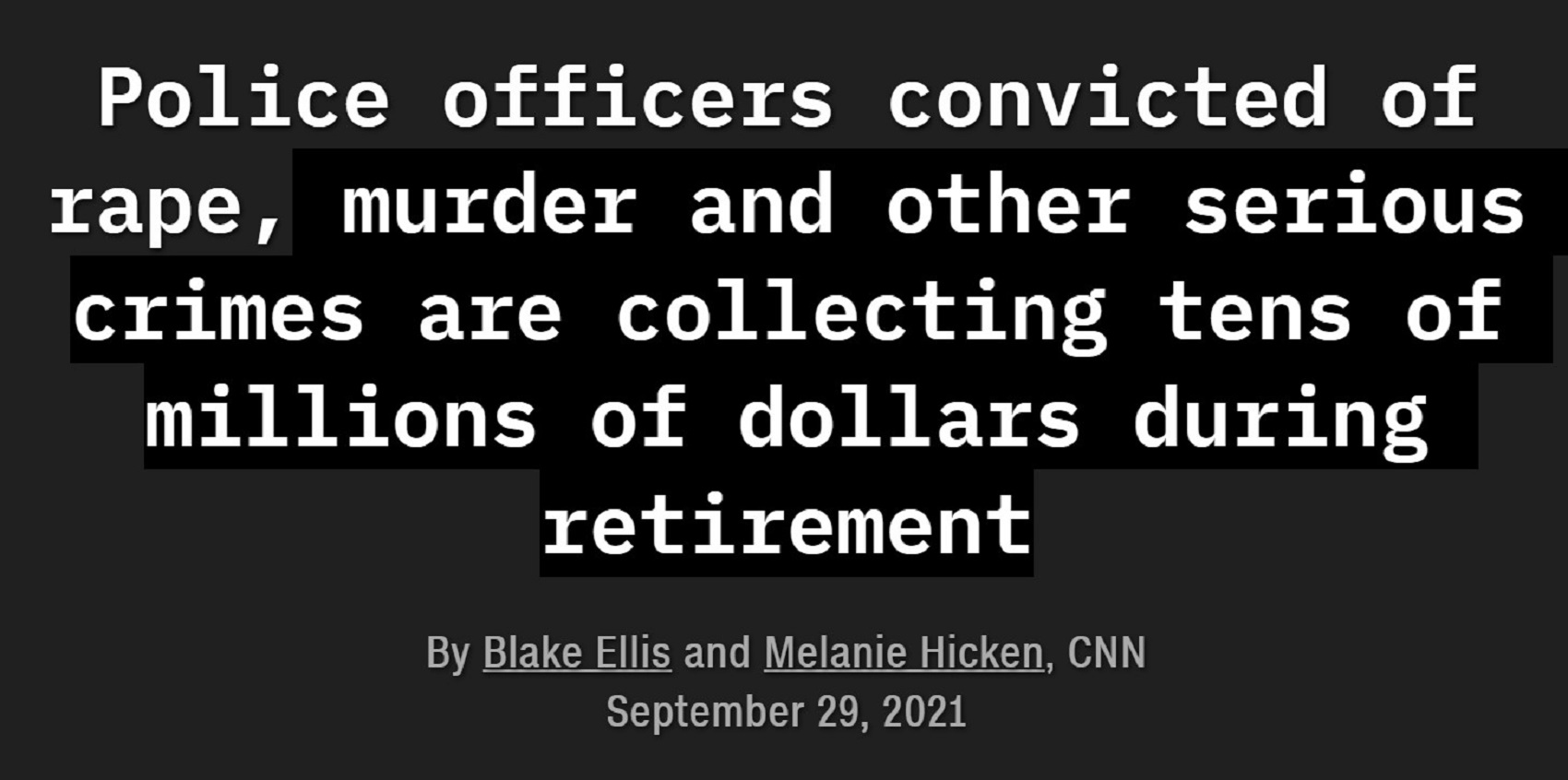
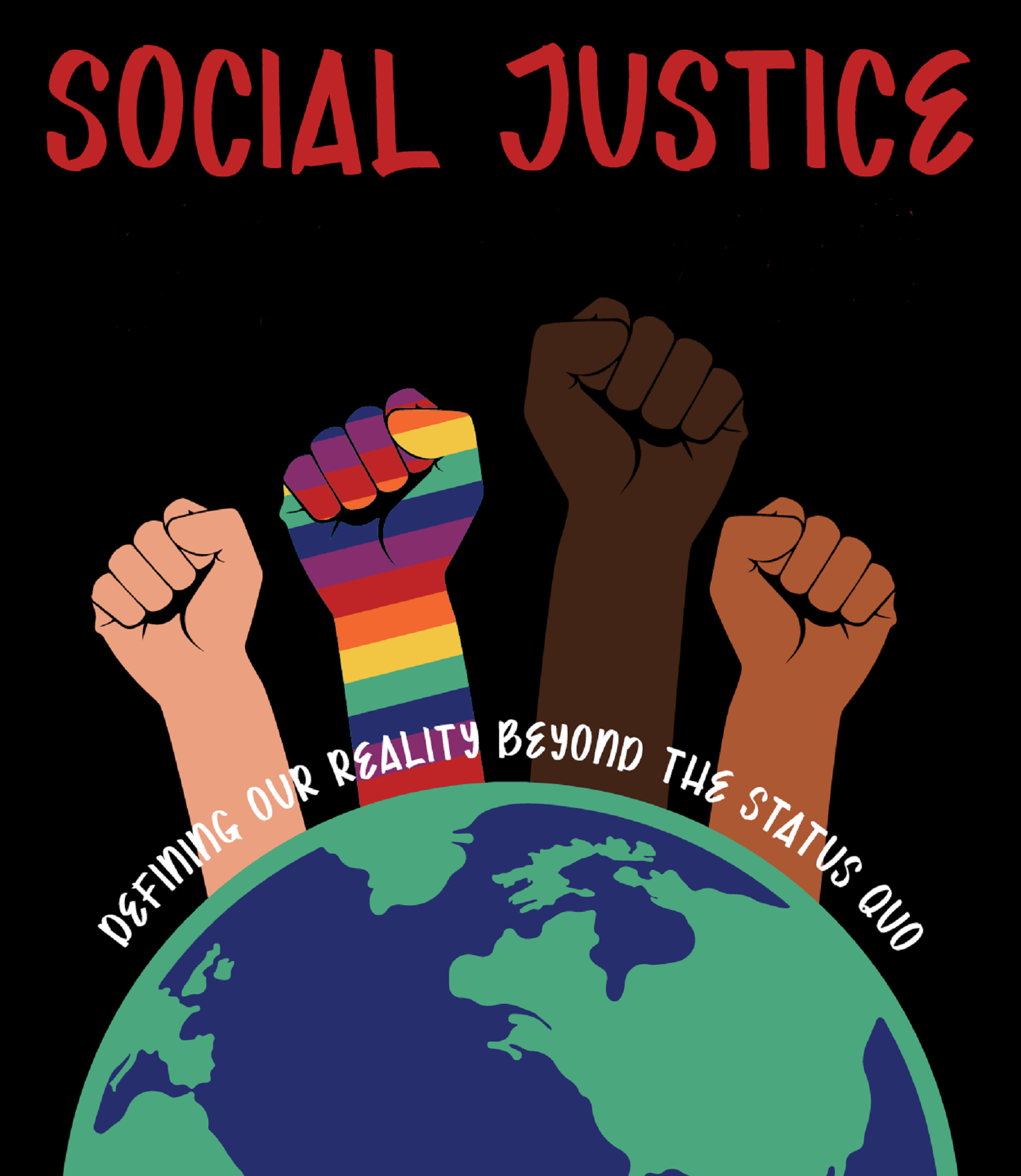
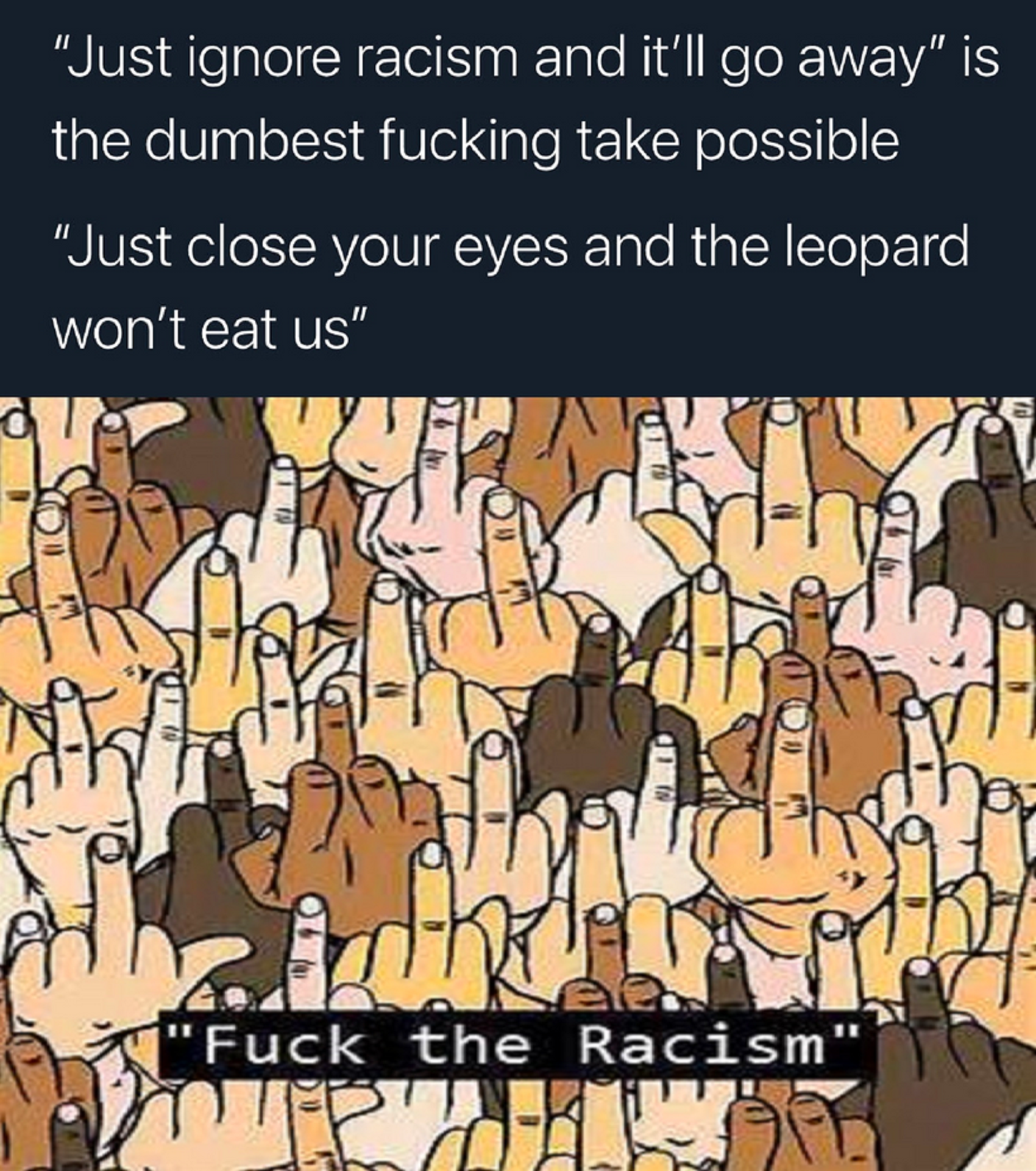

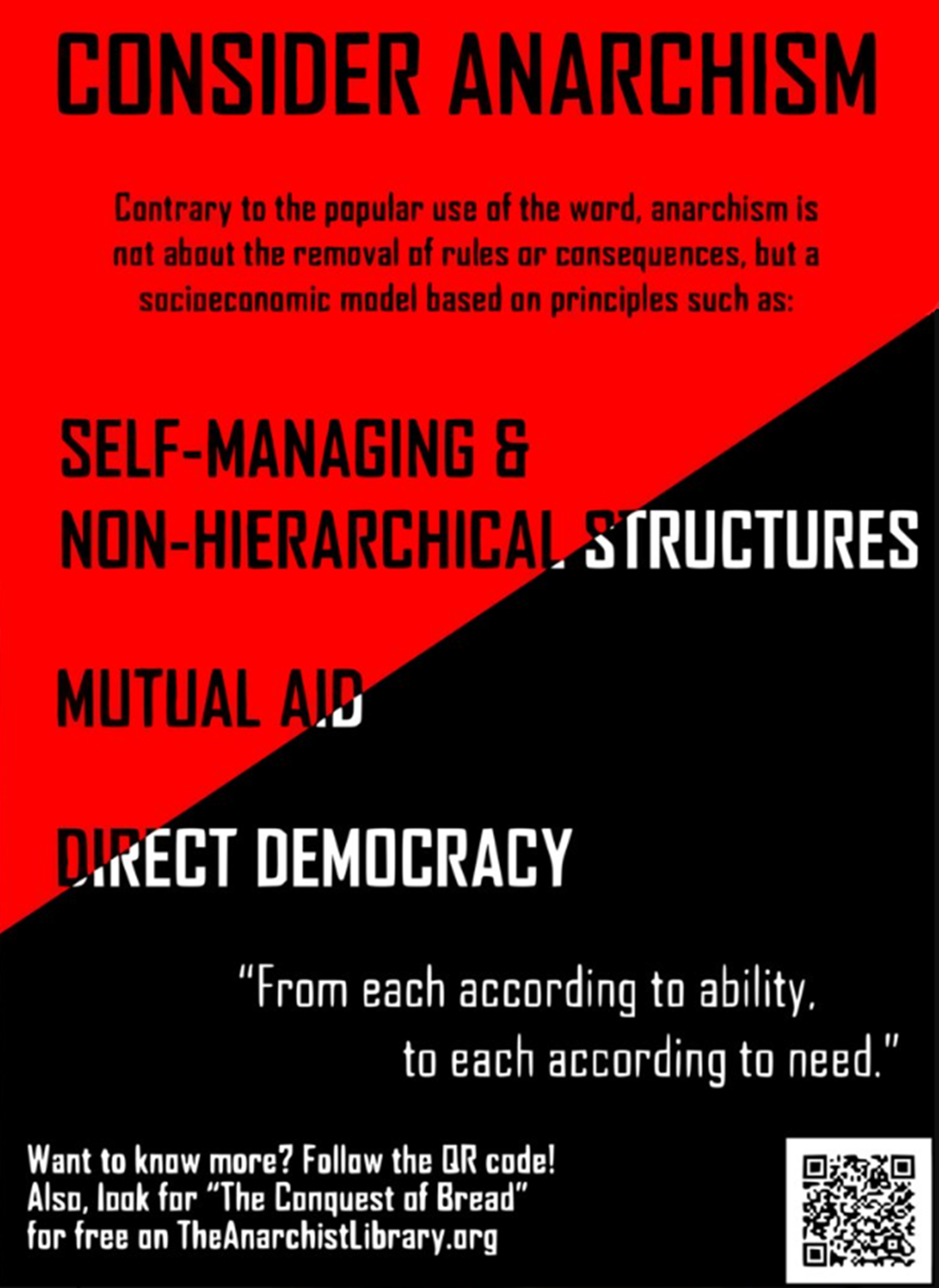

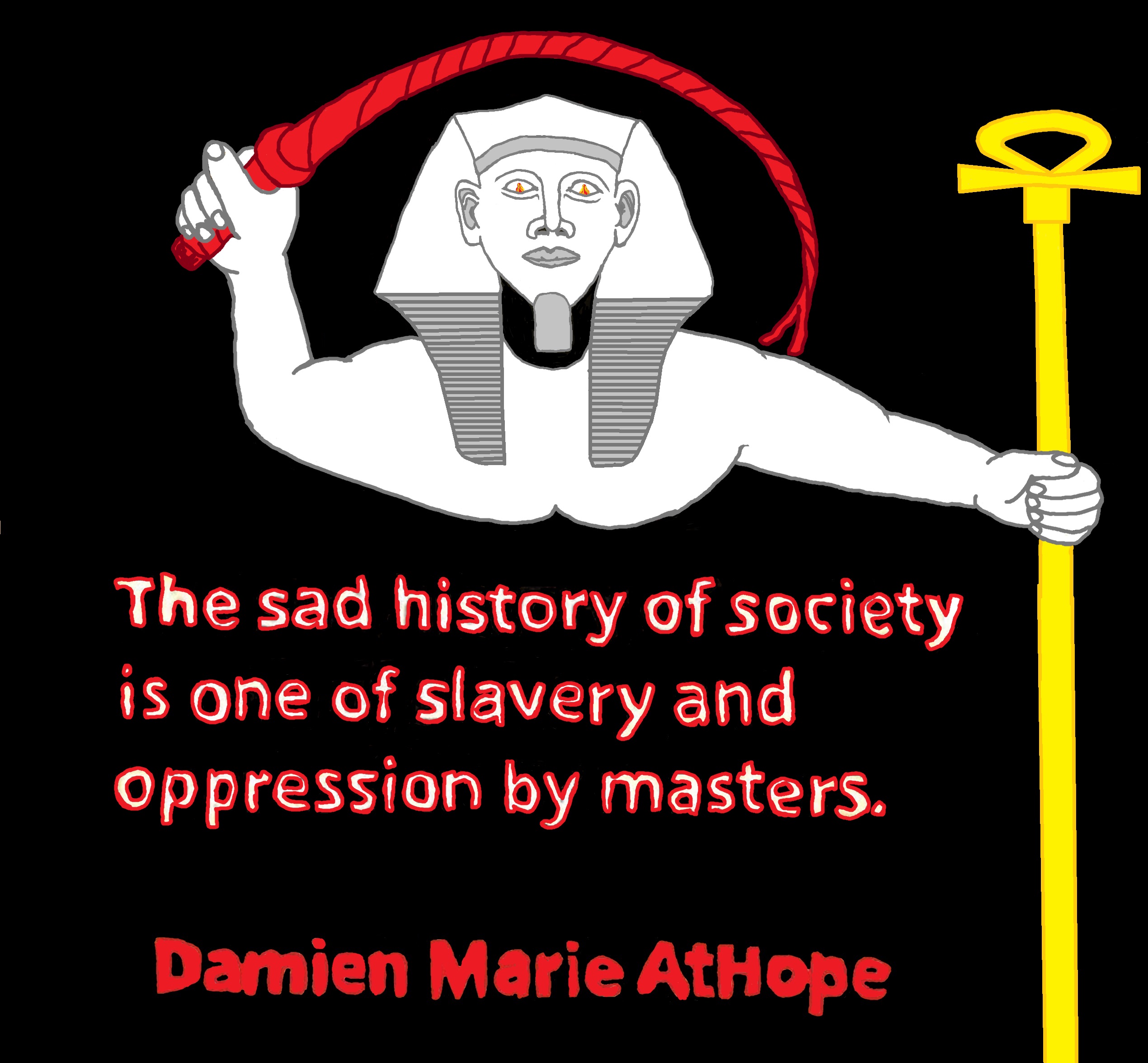
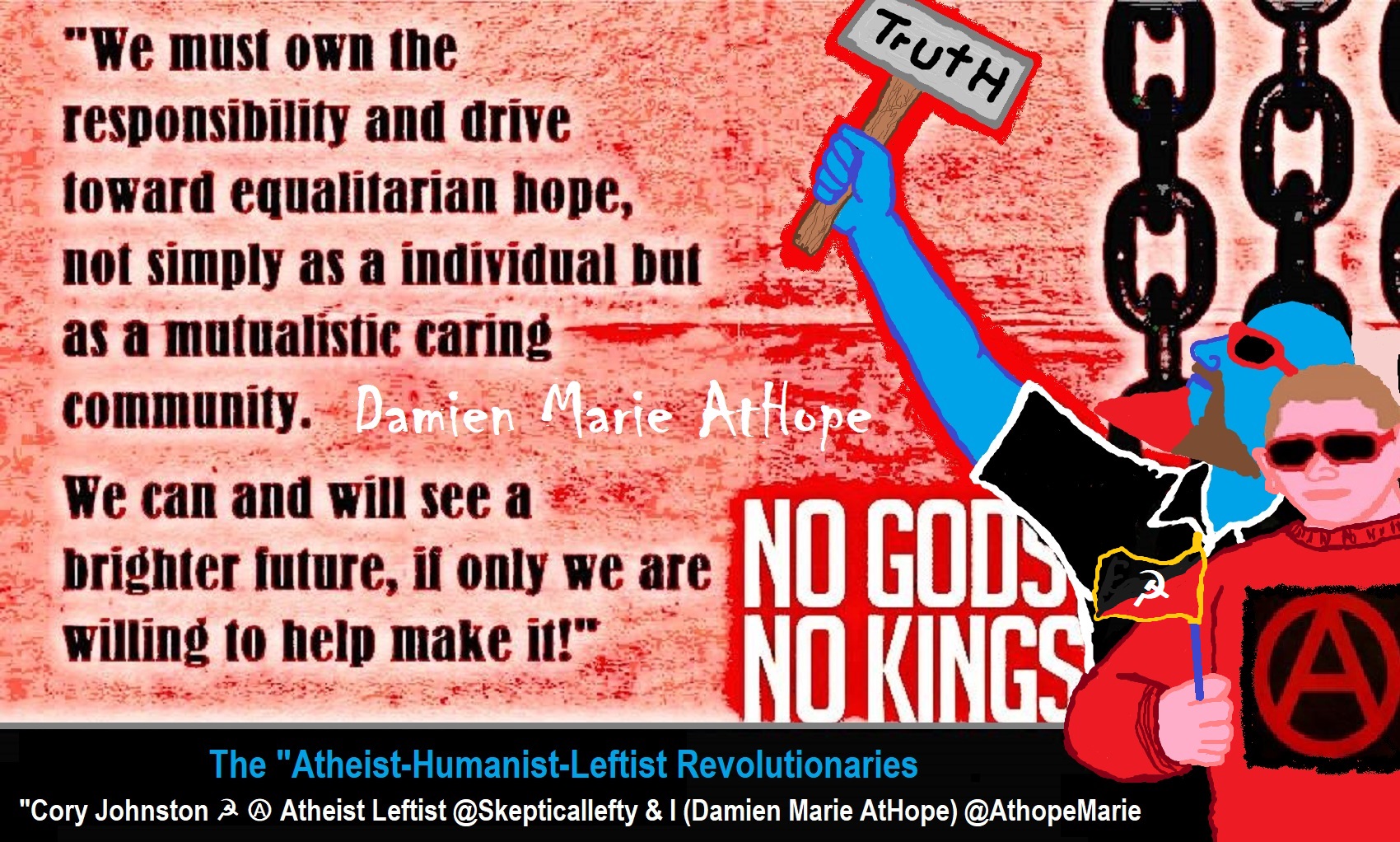
While hallucinogens are associated with shamanism, it is alcohol that is associated with paganism.
The Atheist-Humanist-Leftist Revolutionaries Shows in the prehistory series:
Show two: Pre-animism 300,000 years old and animism 100,000 years old: related to “Anarchism and Socialism”
Show tree: Totemism 50,000 years old: related to “Anarchism and Socialism”
Show four: Shamanism 30,000 years old: related to “Anarchism and Socialism”
Show five: Paganism 12,000 years old: related to “Anarchism and Socialism”
Show six: Emergence of hierarchy, sexism, slavery, and the new male god dominance: Paganism 7,000-5,000 years old: related to “Anarchism and Socialism” (Capitalism) (World War 0) Elite and their slaves!
Prehistory: related to “Anarchism and Socialism” the division of labor, power, rights, and recourses: VIDEO
Pre-animism 300,000 years old and animism 100,000 years old: related to “Anarchism and Socialism”: VIDEO
Totemism 50,000 years old: related to “Anarchism and Socialism”: VIDEO
Shamanism 30,000 years old: related to “Anarchism and Socialism”: VIDEO
Paganism 12,000 years old: related to “Anarchism and Socialism” (Pre-Capitalism): VIDEO
Paganism 7,000-5,000 years old: related to “Anarchism and Socialism” (Capitalism) (World War 0) Elite and their slaves: VIEDO
Paganism 5,000 years old: progressed organized religion and the state: related to “Anarchism and Socialism” (Kings and the Rise of the State): VIEDO
Paganism 4,000 years old: related to “Anarchism and Socialism” (First Moralistic gods, then the Origin time of Monotheism): VIEDO
I do not hate simply because I challenge and expose myths or lies any more than others being thought of as loving simply because of the protection and hiding from challenge their favored myths or lies.
The truth is best championed in the sunlight of challenge.
An archaeologist once said to me “Damien religion and culture are very different”
My response, So are you saying that was always that way, such as would you say Native Americans’ cultures are separate from their religions? And do you think it always was the way you believe?
I had said that religion was a cultural product. That is still how I see it and there are other archaeologists that think close to me as well. Gods too are the myths of cultures that did not understand science or the world around them, seeing magic/supernatural everywhere.
I personally think there is a goddess and not enough evidence to support a male god at Çatalhöyük but if there was both a male and female god and goddess then I know the kind of gods they were like Proto-Indo-European mythology.
This series idea was addressed in, Anarchist Teaching as Free Public Education or Free Education in the Public: VIDEO
Our 12 video series: Organized Oppression: Mesopotamian State Force and the Politics of power (9,000-4,000 years ago), is adapted from: The Complete and Concise History of the Sumerians and Early Bronze Age Mesopotamia (7000-2000 BC): https://www.youtube.com/watch?v=szFjxmY7jQA by “History with Cy“
Show #1: Mesopotamian State Force and the Politics of Power (Samarra, Halaf, Ubaid)
Show #2: Mesopotamian State Force and the Politics of Power
Show #3: Mesopotamian State Force and the Politics of Power (Uruk and the First Cities)
Show #4: Mesopotamian State Force and the Politics of Power (First Kings)
Show #5: Mesopotamian State Force and the Politics of Power (Early Dynastic Period)
Show #6: Mesopotamian State Force and the Politics of Power
Show #7: Mesopotamian State Force and the Politics of Power (Sargon and Akkadian Rule)
Show #9: Mesopotamian State Force and the Politics of Power (Gudea of Lagash and Utu-hegal)
Show #12: Mesopotamian State Force and the Politics of Power (Aftermath and Legacy of Sumer)

The “Atheist-Humanist-Leftist Revolutionaries”
Cory Johnston ☭ Ⓐ Atheist Leftist @Skepticallefty & I (Damien Marie AtHope) @AthopeMarie (my YouTube & related blog) are working jointly in atheist, antitheist, antireligionist, antifascist, anarchist, socialist, and humanist endeavors in our videos together, generally, every other Saturday.
Why Does Power Bring Responsibility?
Think, how often is it the powerless that start wars, oppress others, or commit genocide? So, I guess the question is to us all, to ask, how can power not carry responsibility in a humanity concept? I know I see the deep ethical responsibility that if there is power their must be a humanistic responsibility of ethical and empathic stewardship of that power. Will I be brave enough to be kind? Will I possess enough courage to be compassionate? Will my valor reach its height of empathy? I as everyone, earns our justified respect by our actions, that are good, ethical, just, protecting, and kind. Do I have enough self-respect to put my love for humanity’s flushing, over being brought down by some of its bad actors? May we all be the ones doing good actions in the world, to help human flourishing.
I create the world I want to live in, striving for flourishing. Which is not a place but a positive potential involvement and promotion; a life of humanist goal precision. To master oneself, also means mastering positive prosocial behaviors needed for human flourishing. I may have lost a god myth as an atheist, but I am happy to tell you, my friend, it is exactly because of that, leaving the mental terrorizer, god belief, that I truly regained my connected ethical as well as kind humanity.
Cory and I will talk about prehistory and theism, addressing the relevance to atheism, anarchism, and socialism.
At the same time as the rise of the male god, 7,000 years ago, there was also the very time there was the rise of violence, war, and clans to kingdoms, then empires, then states. It is all connected back to 7,000 years ago, and it moved across the world.
Cory Johnston: https://damienmarieathope.com/2021/04/cory-johnston-mind-of-a-skeptical-leftist/?v=32aec8db952d
The Mind of a Skeptical Leftist (YouTube)
Cory Johnston: Mind of a Skeptical Leftist @Skepticallefty
The Mind of a Skeptical Leftist By Cory Johnston: “Promoting critical thinking, social justice, and left-wing politics by covering current events and talking to a variety of people. Cory Johnston has been thoughtfully talking to people and attempting to promote critical thinking, social justice, and left-wing politics.” http://anchor.fm/skepticalleft
Cory needs our support. We rise by helping each other.
Cory Johnston ☭ Ⓐ @Skepticallefty Evidence-based atheist leftist (he/him) Producer, host, and co-host of 4 podcasts @skeptarchy @skpoliticspod and @AthopeMarie
Damien Marie AtHope (“At Hope”) Axiological Atheist, Anti-theist, Anti-religionist, Secular Humanist. Rationalist, Writer, Artist, Poet, Philosopher, Advocate, Activist, Psychology, and Armchair Archaeology/Anthropology/Historian.
Damien is interested in: Freedom, Liberty, Justice, Equality, Ethics, Humanism, Science, Atheism, Antiteism, Antireligionism, Ignosticism, Left-Libertarianism, Anarchism, Socialism, Mutualism, Axiology, Metaphysics, LGBTQI, Philosophy, Advocacy, Activism, Mental Health, Psychology, Archaeology, Social Work, Sexual Rights, Marriage Rights, Woman’s Rights, Gender Rights, Child Rights, Secular Rights, Race Equality, Ageism/Disability Equality, Etc. And a far-leftist, “Anarcho-Humanist.”
I am not a good fit in the atheist movement that is mostly pro-capitalist, I am anti-capitalist. Mostly pro-skeptic, I am a rationalist not valuing skepticism. Mostly pro-agnostic, I am anti-agnostic. Mostly limited to anti-Abrahamic religions, I am an anti-religionist.
To me, the “male god” seems to have either emerged or become prominent around 7,000 years ago, whereas the now favored monotheism “male god” is more like 4,000 years ago or so. To me, the “female goddess” seems to have either emerged or become prominent around 11,000-10,000 years ago or so, losing the majority of its once prominence around 2,000 years ago due largely to the now favored monotheism “male god” that grow in prominence after 4,000 years ago or so.
My Thought on the Evolution of Gods?
Animal protector deities from old totems/spirit animal beliefs come first to me, 13,000/12,000 years ago, then women as deities 11,000/10,000 years ago, then male gods around 7,000/8,000 years ago. Moralistic gods around 5,000/4,000 years ago, and monotheistic gods around 4,000/3,000 years ago.
To me, animal gods were likely first related to totemism animals around 13,000 to 12,000 years ago or older. Female as goddesses was next to me, 11,000 to 10,000 years ago or so with the emergence of agriculture. Then male gods come about 8,000 to 7,000 years ago with clan wars. Many monotheism-themed religions started in henotheism, emerging out of polytheism/paganism.


Damien Marie AtHope (Said as “At” “Hope”)/(Autodidact Polymath but not good at math):
Axiological Atheist, Anti-theist, Anti-religionist, Secular Humanist, Rationalist, Writer, Artist, Jeweler, Poet, “autodidact” Philosopher, schooled in Psychology, and “autodidact” Armchair Archaeology/Anthropology/Pre-Historian (Knowledgeable in the range of: 1 million to 5,000/4,000 years ago). I am an anarchist socialist politically. Reasons for or Types of Atheism
My Website, My Blog, & Short-writing or Quotes, My YouTube, Twitter: @AthopeMarie, and My Email: damien.marie.athope@gmail.com

